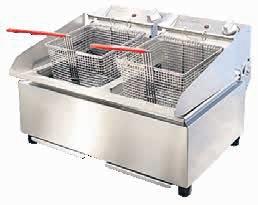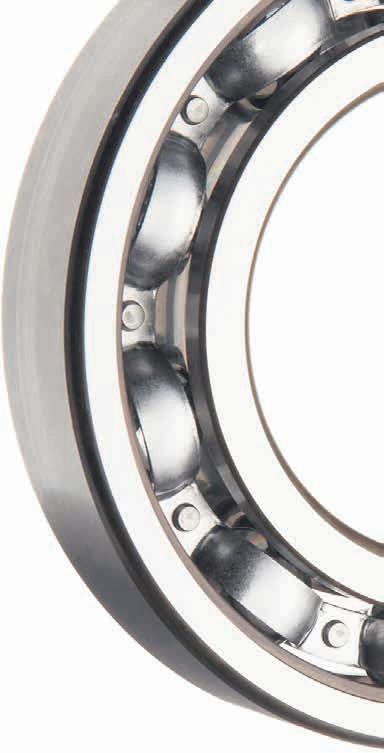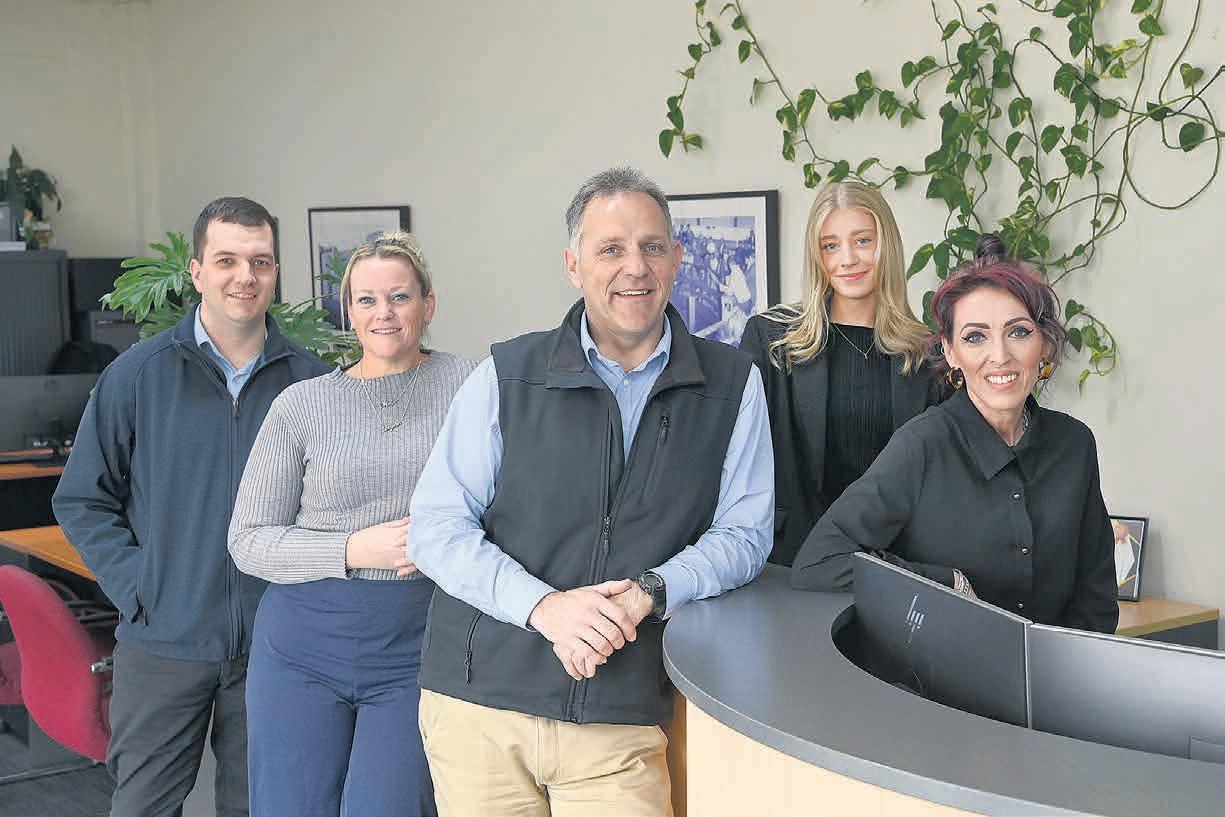

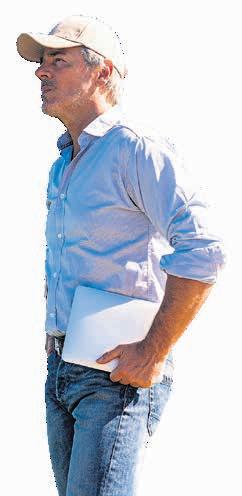
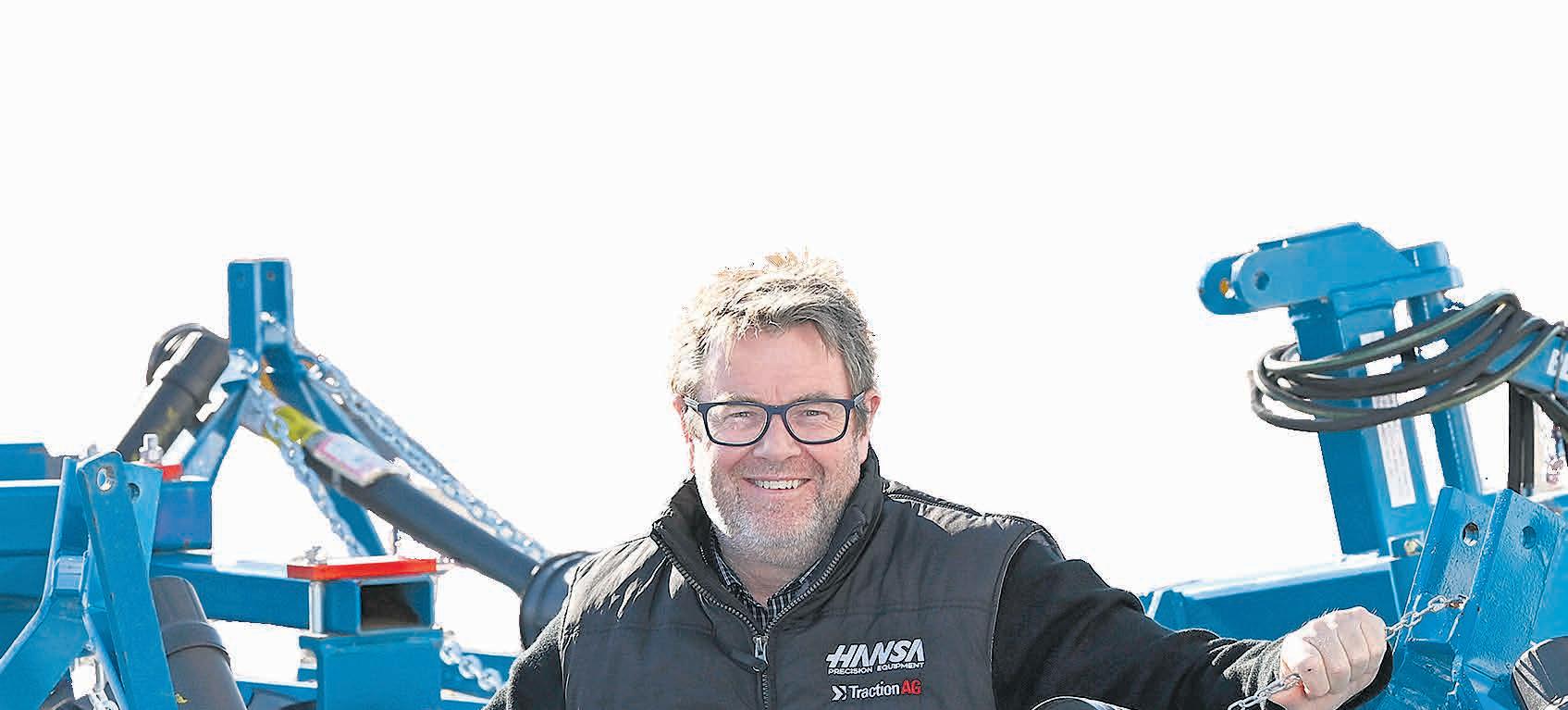
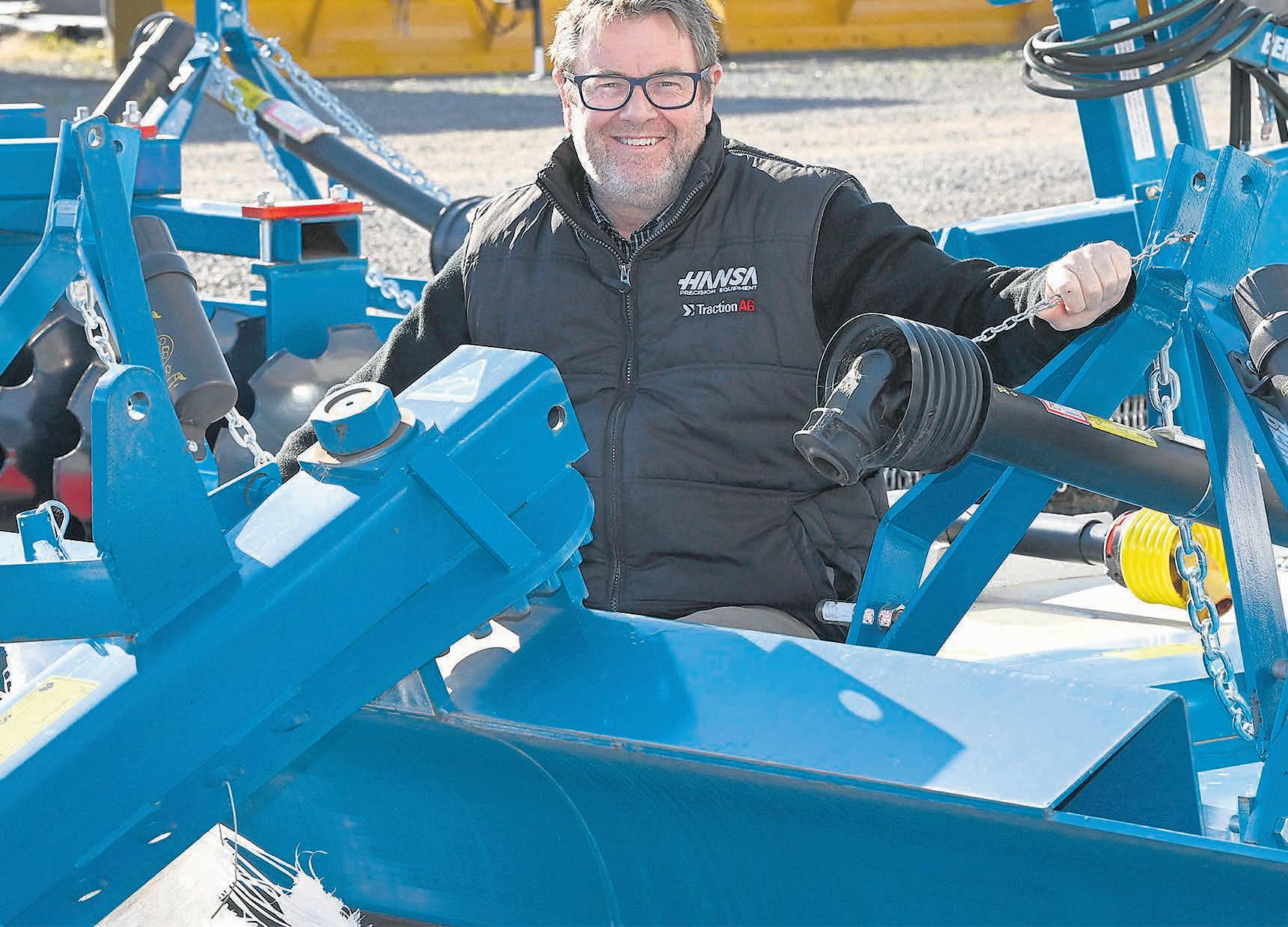
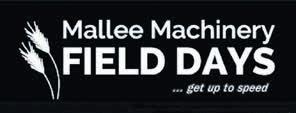
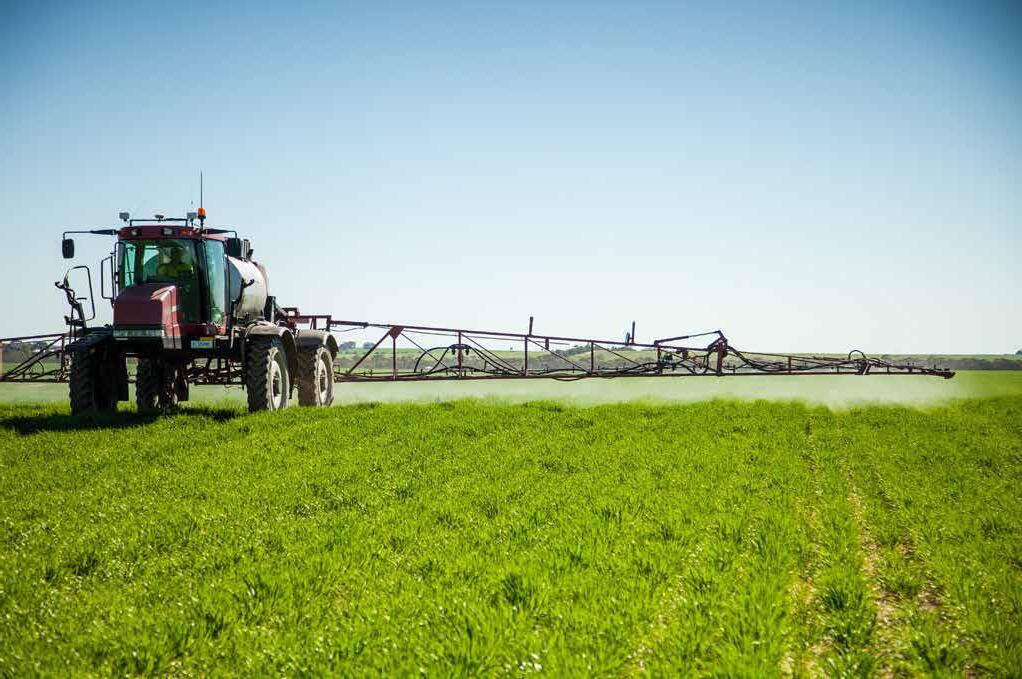






















BY BRONWYN HASTINGS
Speed Lions Club has announced key attractions of this year’s Mallee Machinery Field Days, including guest speaker Tom Hawkins, new exhibitors and technological upgrades at the site.
Field days secretary Matt Brady said the event had grown exponentially across the past four years, driven not only by the tireless commitment of the Speed Lions Club, who host the Mallee’s largest agricultural event, but also by the shared enthusiasm of exhibitors nationwide, united in their support for the region’s farming communities.
“This year we’ve had a lot of interest from new exhibitors who are looking forward to showcasing the latest in agriculture across the two days,” Mr Brady said.
“The site is once again at full capacity.
New exhibitors include Signature Offroad Solutions, which specialises in utility task vehicles, UTVs, Muddy River Agriculture with their Horsch 8000L 400hp self-propelled sprayer and MJM Equipment Australia, which will showcase Balzer equipment.
This year the Speed Lions Club has also invested in long-term improvements at the site.
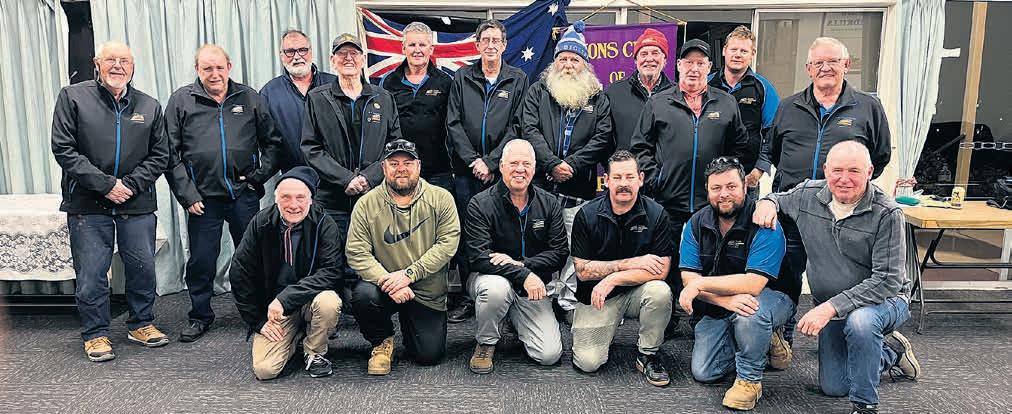
DRIVING FORCE: Speed Lions Club members, hosts of the Mallee’s largest agricultural field days, are looking forward to welcoming visitors to the site.
“In the past the remote location of our site has presented its share of logistical challenges, but we’ve been working hard with one of our major sponsors, SpaceTec, to install fibre optic cables across the site, which will help to improve connectivity for both exhibitors and visitors,” Mr Brady said.
“We’ve also laid a permanent gypsum pad for the craft and special interest tent and upgraded the power network to meet the evolving needs of exhibitors.”
Mr Brady said a highlight of
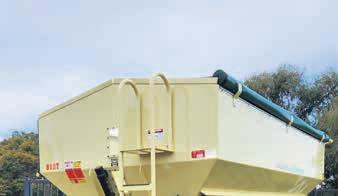
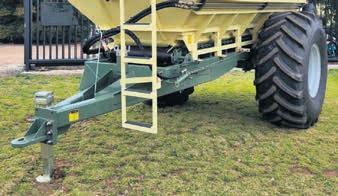

the event would be SwarmFarm Robotics.
“This company pioneers advanced agricultural robotics designed for crop production and will deliver live demonstrations that offer a glimpse into the future of farming,” he said.
He said this year’s event would also have a strong emphasis on farmer health and wellbeing.
AFL football great and guest speaker Tom Hawkins will officially open the event on the Wednesday, sharing his experience of stepping away from the


limelight of football to take up an agricultural role with Nutrien Ag Solutions.
Mr Brady said current forecasts suggested a below-average season for agricultural producers throughout the Mallee region.
“We need the spring to be kind to us and bring some rain our way,” he said.
“Despite the dry conditions this year, it’s encouraging to see such strong support from our exhibitors, who continue to showcase cutting-edge technology to our farming community.”
Date: Wednesday, August 6 and Thursday, August 7.
Time: 8.30am to 5pm.
Location: 2574 Sunraysia Highway, Speed, Victoria 3488 – two kilometres south of Speed.
Admission: $15 and children under 15 years no cost.
Facilities: On-site parking and toilets, food and refreshment stalls, first aid and Victoria Police, phone and mobile phone service and EFTPOS facilities.
Accommodation: No camping on site. Accommodation at Lascelles, Patchewollock, Woomelang, Sea Lake, Ouyen and Hopetoun. Camping facilities at Tempy, Lascelles, Woomelang, Ouyen, Sea Lake, Hopetoun and Nandaly.
More information: www.mmfd.com.au

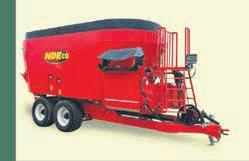






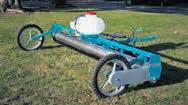





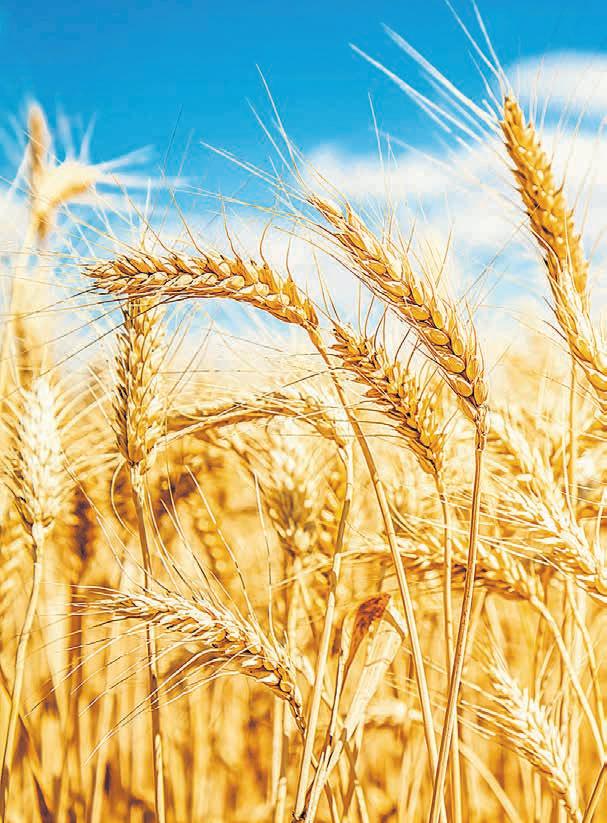

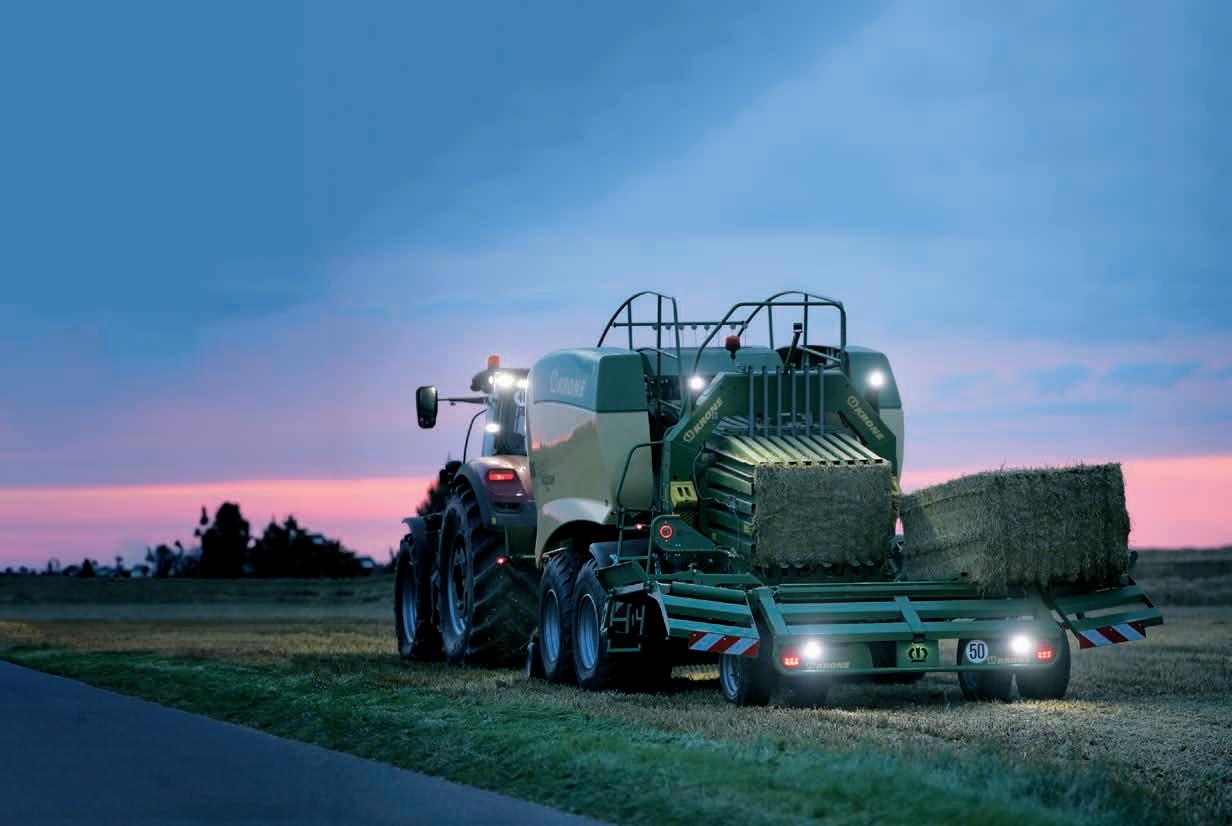


August 6 & 7, 2025 at Speed
BY KYLIE ZANKER, YARRIAMBIACK SHIRE MAYOR
The Mallee Machinery Field Days event returns once again to the town of Speed, in the north of Yarriambiack Shire.
The two-day event is a celebration of our region’s agricultural industry and community, providing an opportunity to showcase new agricultural technology and offer social togetherness for those who attend.
The occasion attracts more than 8500 attendees and 350 exhibitors from across Australia.
The dedicated and hardworking volunteers of the Lions Club of Speed do a wonderful job to co-ordinate and grow the annual event – the largest in our shire.
From humble beginnings in 1979, the Mallee Machinery Fields Days is now one of the biggest and most respected field days in the state.
It is a great example of our region’s volunteerism and our agricultural industry working hand-in-hand as the combined lifeblood of our economy and community.
On behalf of Yarriambiack Shire Council, I’d like to congratulate the Lions Club of Speed for their continued efforts and commitment to provide the agricultural industry the two-day event that in-turn provides an economic boost to our region.
Yarriambiack Shire councillors and staff will again be in attendance this year to provide patrons with an opportunity to ask questions and share their ideas on

projects, issues and ideas that impact our community.
Visitors to our marquee site will be able to get further information on our council plan and other strategies, current and completed projects, raise concerns or requests, and share feedback on issues available for public comment.
Council’s engagement van will also be in attendance to host fun children’s activities, new release books, as well as information on how to utilise Yarriambiack Libraries’ mobile service.
Council acknowledges the tremendous hard work and volunteer hours that go on behind the scenes to deliver these events and wish the event committee, exhibitors and patrons a wonderful Mallee Machinery Field Days.
See you in Speed!


Tom Hawkins, mental health advocate and former AFL Geelong footballer, is Mallee Machinery Field Days’ guest speaker, and will officially open the event on Wednesday next week.
Mr Hawkins is now working as a livestock representative with Nutrien Ag Solutions.
He said he was excited to join an industry that was meaningful to him.
“Family, farming and footy are my passions,” he said.
“The role with Nutrien offers me a unique and exciting opportunity to challenge myself in a new way and enter an industry that is meaningful to me.
“I am thrilled to be working with the farming customers who are the heart of the agriculture industry.”
Mr Hawkins is also known for his motivational speeches. He has appeared at a variety of events and institutions and spoken about mental health and wellbeing, as well as leadership, overcoming challenges, and teamwork.
He retired from an AFL career that saw him rank 13th all-time in league goal-kicking, after he was drafted under the father-son rule.
Mr Hawkins made his football debut in 2007, has been part of three premiership wins, won a Coleman Medal.
He also owns a farm near Geelong after growing up on a farm at Finley, NSW.
Mallee Machinery Field Days secretary Matt Brady said the committee was pleased to be hosting Mr Hawkins.
“We’re looking forward to having Tom Hawkins at our field days,” he said.
“His appearance was made possible thanks to the support of Nutrien Ag Solutions – one of our major sponsors.”






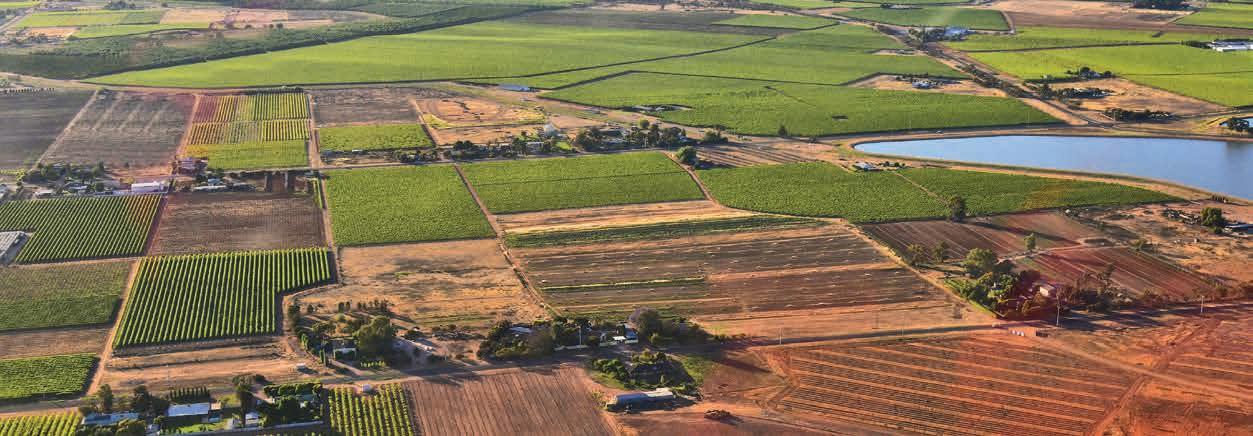






The soil forms the basis of healthy crops and
it efficiently and with care ensures long-term
In addition to efficiency and
Fendt 900 Vario MT combines the best of two worlds. The experience gained from installing more than 250,000 Vario gearboxes, and more than 30 years of working with tracked tractors, as well as the Fendt operator environment and Fendt Smart Farming functions make this a modern and innovative tracked tractor.
Machine power alone is no longer sufficient for efficient cultivation of large areas. Enormous potential lies in planning and documentation of work, and automatic control of partial widths and seed rates. Fendt Smart Farming offers you the functions and interfaces you need.


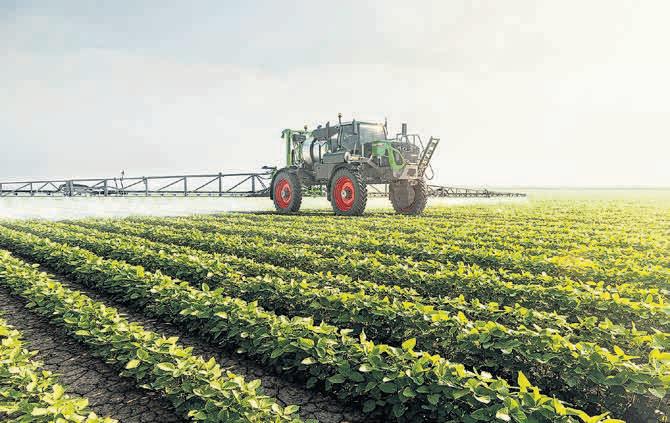
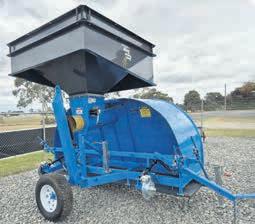
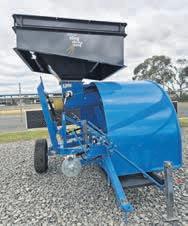
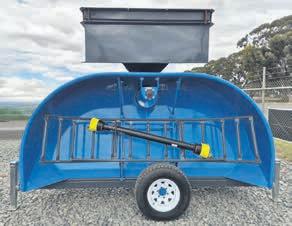


Mallee farmer Mark Roberts is a thirdgeneration Speed Lions Club member, following in the footsteps of his dad and grandfather.
His grandfather, the late Bob Roberts, was a founding member of the Speed Lions Club, the Mallee Machinery Field Days was his brainchild.
Mr Roberts fondly recalls his grandfather telling him stories of how the field days began.
“He used to tell me how a group of them got together and organised a few manufacturers to hold demonstrations out in the paddock,” he said.
Following its success, the Speed Lions Club was formed and the club worked towards finding a permanent site for the event.
“He was always very proud of what it had become,” Mr Roberts said.
“He had the opportunity to return to the site in 2018 to help celebrate the event’s 40th anniversary.”
Bob Roberts died in 2020 and the following year, Mr Roberts signed up to the Speed Lions Club, upholding his grandfather’s legacy.
“The club was dwindling at the time, and they were in need of more members,” Mr Roberts said.
“The field days is such an important part of the area, and I didn’t want to see it fade away.”
Mr Roberts said it was rewarding to be part of a club that injects so much money back into the local community.
“The reward is that you get to see the local community benefitting from the event, helping local schools, sporting clubs and others in need,” he said.
Mr Roberts said one of his most memorable field days was when he was a teenager, about 15 or 16.
“It had rained the day before and the site was a wet, muddy mess,” he said.
“There were puddles and wheels spinning everywhere.
“Farmers always talk about wet years and how much rain they’ve had, and whenever I think of a wet year, that memory has stuck with me ever since.”
In the true spirit of the Mallee, the showcase has always continued, despite the weather – in rain, hail or shine.
Hoping for the perfect weather conditions this year, Mr Roberts said he was gearing up for another successful event.
“It’s the display of all the latest and greatest in farming and agriculture that I enjoy most,” he said.
“To have everything in the one spot, right on our back step is pretty impressive.”
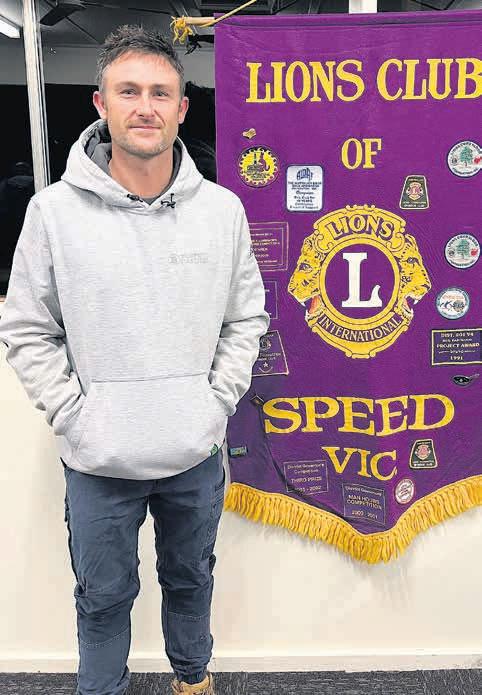

Speed’s Mallee Machinery Field Days is one of the Mallee’s biggest events, and a major event on the agricultural calendar.
In the 1970s, the chartered members of the Speed Lions Club searched for a fundraising venture that would hold them in a sound position to serve both the local and broader communities.
The first field days was in 1979 in a local paddock, where 39 dealers exhibited their products with an emphasis on broad acre agricultural machinery and equipment.
The two-day event was held in different temporary sites with all amenities erected and pulled down each year – a major logistical exercise.
After six years the current permanent site was settled on a leased area off the Sunraysia Highway between Speed and Turriff – 42 kilometres south of Ouyen and 55 kilometres north of Hopetoun.
Subsequently, permanent amenities were constructed and the club was successful in acquiring the original historic Speed Railway Station as its main office.
Across the years permanent buildings and utilities were built to keep up with the demand.
Today, the field days has earned the respect of the industry; it is a major event on the agricultural calendar and one of the biggest events in the Mallee.
About 350 site holders and 8500 visitors make the event the success that it is. People come to view the equipment on offer, and learn from the technical information to aid modern broadacre farming.
One of the features of the field days is its circular design – a section of the site is allocated for crafts and interests, which includes fashion parades, central demonstrations and craft tables.
Mallee Machinery Field Days has developed into one of the biggest in the state and has been a great fundraiser for the Speed Lions Club and many other local organisations.
The Speed Lions Club has 24 members and without their volunteered hard labour and the support from local sporting and social clubs, this event would not be the success it is today.
Site, delivered and ex-farm pricing
We can help you find the best value for your grain
We manage the marketing and sales process so you can focus on what you do best –growing the crop!
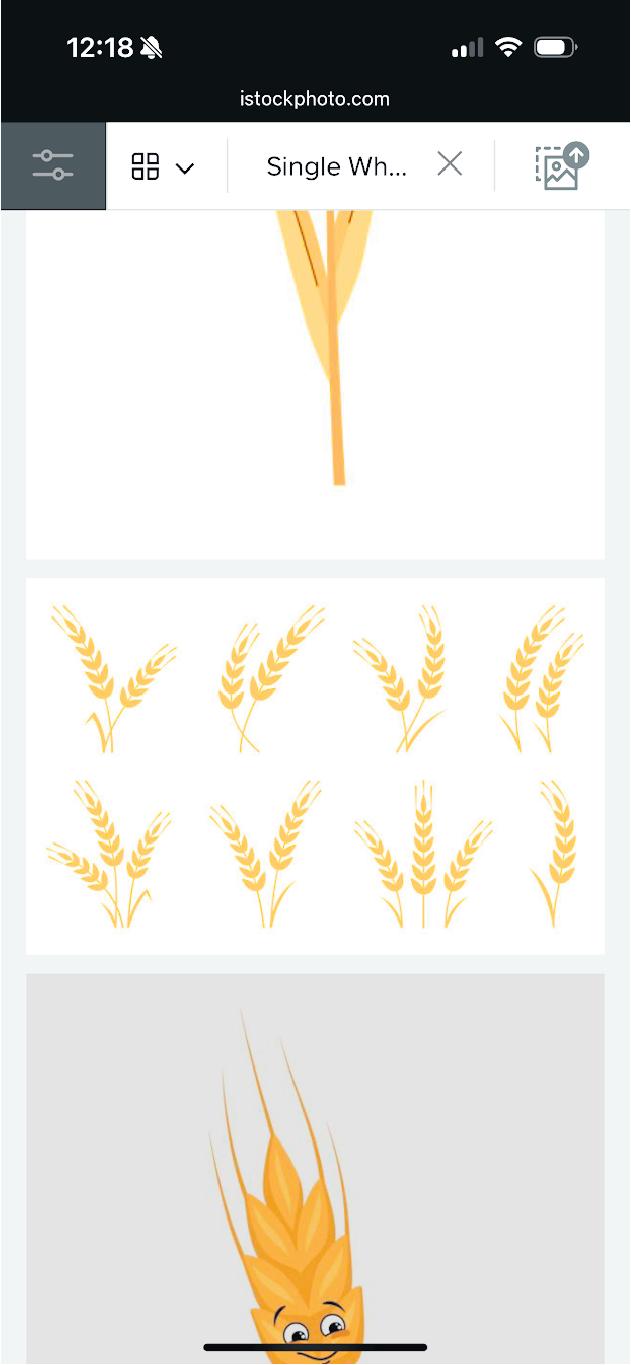






farm safety, animal welfare and biosecurity across Victoria is the aim of two Victorian Farmers Federation projects.
Stock Sense, which is funded by the cattle, and sheep and goats compensation funds, helps Victorian livestock producers and small landholders maintain and improve their animal health and welfare and farm biosecurity.
The program is through free online resources such as webinars and factsheets, as well as facilitating educational workshops across the state.
Similarly, the Making Our Farms Safer team regularly travels across the state for free farm safety visits and community meetings, while also producing a monthly newsletter and a toolkit of handbooks and resources to assist and educate farmers on implementing and maintaining safety.
VFF president Brett Hosking spoke highly of the two projects and the benefits they provided for Victorian farmers of all types.
“Both the Making Our Farms Safer and Stock Sense projects are great ways of engaging everyday farmers with information and facts that will actually help them in their businesses, their families and their com-
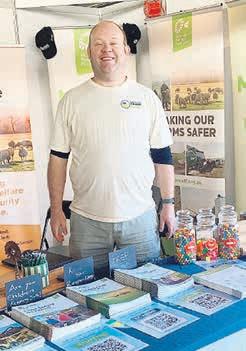
INFORMATIVE: Making Our Farms Safer senior farm safety advisor Paul Wearing.
munities to work towards better farming outcomes,” he said.
“We’re looking forward to both programs continuing to engage and support our farmers in real and practical ways.”
People can learn more about the VFF projects by visiting the VFF Making Our Farms Safer site at the Mallee Machinery Field Days, via their Facebook page or website, making ourfarmssafer.org.au, or the Stock Sense Facebook page or website at vff.org.au/ stocksense.





Preston Builders, based in the heart of the Wimmera-Mallee in Warracknabeal, is a proud, familyowned and run building company.
Headed by Wayne and Lee Preston, the company boasts a team of about 14 staff, including skilled carpenters and a friendly, experienced administration crew.
Mr Preston said at the core of the business was a team.
“When our people feel supported and valued, that same energy flows into every home we build and every client we serve,” he said.
“As a custom builder, every home we create is unique, designed specifically to suit the lifestyle, budget and future needs of each individual client.
“We believe your home should be as personal as your story.
“While you’re welcome to explore
our past designs for inspiration, no two Preston Builders’ homes are ever the same.”
Mr Preston said the team was proud of in-house designer Lee Preston, who guides the creative process.
“With a background in nursing and a passion for functionality, Lee specialises in designing ‘lifelong’ homes – spaces that adapt with you through life’s changes, whether that’s mobility needs, recovery from injury, or growing family demands,” he said.
“At Preston Builders, building a quality home is a given, but it’s how we make you feel that matters most.
“We believe in guiding, protecting, and supporting our clients through what can often be an overwhelming journey.
“Whether you’re choosing tapware, talking budgets, or sharing stories about your family milestones, our team is here.”
Mr Preston said when people build with Preston Builders, they were not just getting a house, they were gaining a team that genuinely cared about the customer and achieving their desired outcome.
“We will walk with you, every step of the way because here, you’re not just a client, you’re part of the Preston Builders’ family,” he said.
People can visit Preston Builders website prestonbuilders.com.au for more information.









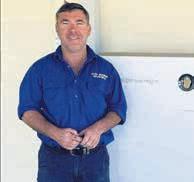


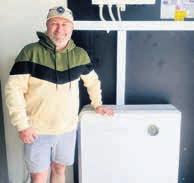










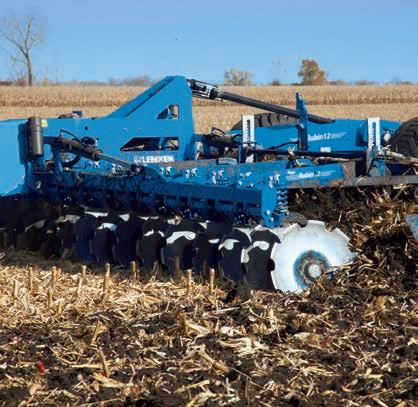








Traction Ag will again showcase its traditional products and services at the Mallee Machinery Field Days this year, but with one exciting difference – the opening of a new branch at Swan Hill.
Horsham-based sales administrator Anthony Redford said the Swan Hill team would join the established teams at Horsham, Naracoorte and Nhill, with a mix of branch representatives at the Speed event.
“We have a lot of products that are going to suit everyone across our areas, from the hay job to general purpose tractors – we have a good range,” he said.
“AGCO products have a huge following through the Wimmera Mallee, so we’re supporting the clients who are up that way, and showing what’s coming into the marketplace.”
Mr Redford said while tractors were the mainstay of farming, a new range of side-by-sides, chaser bins and John Berends implements would be showcased at the event.
“The Polaris machines are very popular, and we’ll have Nyrex chaser bins, a company that has only just recently come on board, which will be an exciting addition to what we do,” he said.
“We are excited to announce that


OPPORTUNITY: Traction Ag Horsham-based sales administrator Anthony Redford is looking forward to catching up with attendees at next week’s Mallee Machinery Field Days.
we have also teamed up with Honey Bee fronts, which are due to arrive in our stores just before harvest in October, so that’s exciting.”
Mr Redford said Traction Ag’s 40-odd employees shared knowledge and expertise across a broad area,
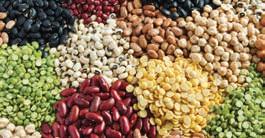
which encompassed a range of production and farming practices.
“We’ve got exposure in the Mallee with Swan Hill, we’ve got exposure at Naracoorte, and across to Nhill and Horsham,” he said.
“We’ve got a good mix of people
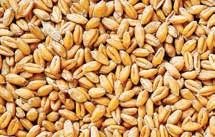
offer a personalised marketing service for Australian grain growers and consumers
We have established a strong reputation as specialist commodity traders and accumulators and developed trusted relationships with our customers.
We manage all negotiations with integrity and leverage from our extensive experience in grain trading, logistics, and risk management.
and products at our dealerships that certainly help cover all our farmers’ needs.”
Mr Redford said Traction Ag would demonstrate a modified RoGator at Speed.
“The RoGator self-propelled spray-



“The biggest thing about people in the Mallee – they know their land and they know what they can produce, they’re comfortable with that, and they always have smiles on their faces”
–Anthony Redford
er has been extended from a 6300-litre tank to a 8200-litre and has a 36-metre spray boom – we’re pretty excited to be showing that off,” he said.
“And we have an Agtronics chaser – its weed-spray technology has a chemical-saving component, so instead of having multiple shuttles of Roundup to do a spray application, it’s just spot spraying the weed as you come across it, a potential chemical saving of about 80 per cent.”
Mr Redford said he was looking forward to attending the field days, not just to showcase a range of machinery and products, but to see the attendees.
“It’s a great chance to catch-up and have a chat about the season and what’s coming forward,” he said.
“The biggest thing about people in the Mallee – they know their land and they know what they can produce, they’re comfortable with that, and they always have smiles on their faces.”
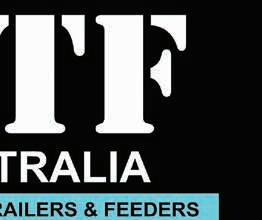



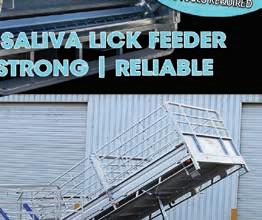

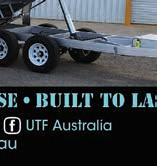




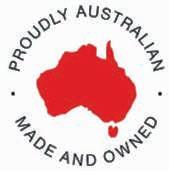
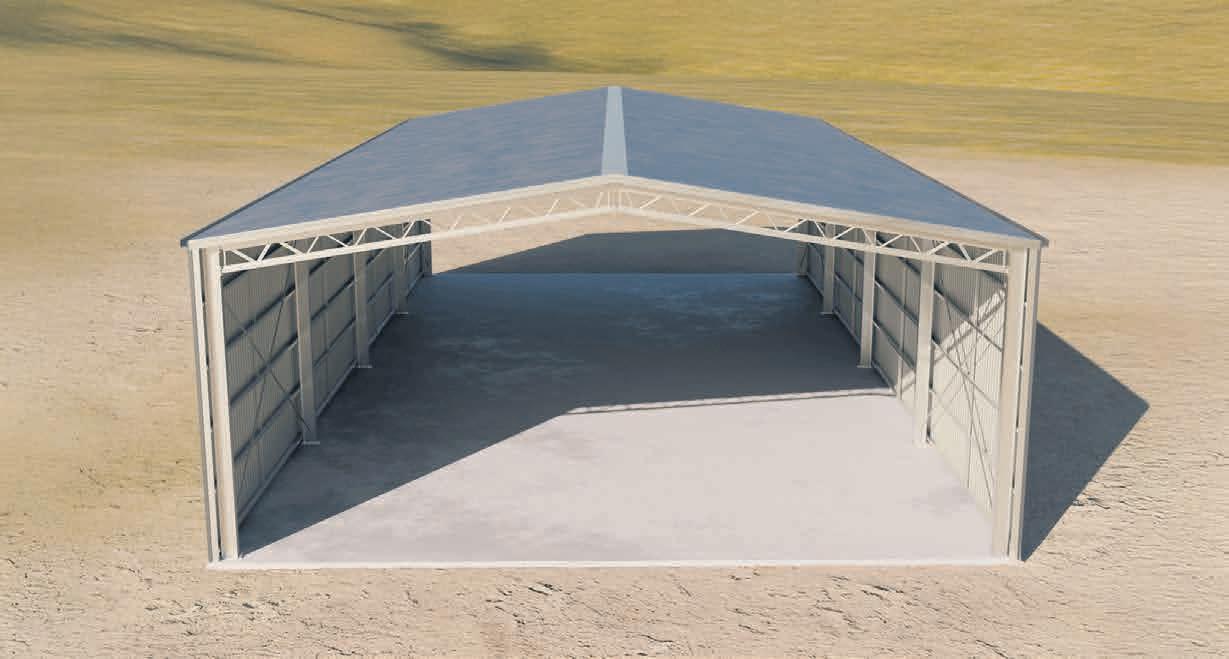




Primary Sales Australia is marking 40 years of supporting Australian agriculture and invites people to celebrate with their team at the Mallee Machinery Field Days.
PSA will be joined by harvester specialists, and will focus on optimising header setup, reducing crop losses and boosting productivity.
PSA customer service and marketing co-ordinator Scout Rayner said that for the team, being out in the paddock with growers was not just part of the job, it was a core value.
“The team spends more time on the road than behind a desk, working closely with farmers to understand their needs firsthand,” she said.
“This hands-on approach drives ongoing product improvements and ensures PSA continues to deliver practical, high-performance solutions that truly support growers where it matters most.”
To celebrate four decades of reducing harvest losses, PSA is offering special field day pricing on farmers’ favourite harvest loss tool, the Bushel Plus SmartPan System, with the option for the team to visit during harvest and conduct grain loss testing on farm.
Brothers Jack and Sam Gall from north-east Victoria have each equipped their headers with the Bushel Plus

SmartPan System from Primary Sales.
Jack Gall said he ‘loves it’.
“It was a cheap asset to buy,” he said.
“We transfer it between our different headers – we bought one each so we can test a couple of machines on the go.”
Growers looking to further reduce losses are increasingly switching from OEM knife guards to PSA Adapt-aGap systems.
These knife guards feature easily interchangeable plastic crop fingers, recognisable by their signature pink and blue colours, available in varying
angles and gap widths. This unique design significantly reduces front losses.
This year also marks a moment of change for the PSA team; as the company celebrates 40 years, they also bid farewell to long-serving Victoria and New South Wales territory manager Brian Legg, who is retiring after the Mallee Machinery Field Days.
People can visit PSA at site 137 to say goodbye to Brian, and meet the new territory managers, Victoria’s Josh Sampson and New South Wales’ Shane Harrison.
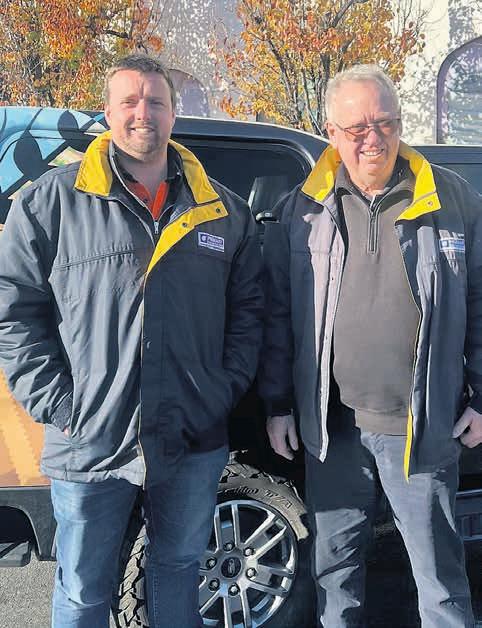







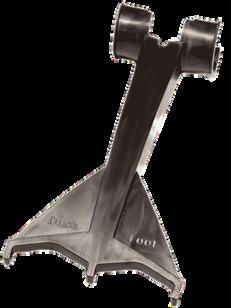



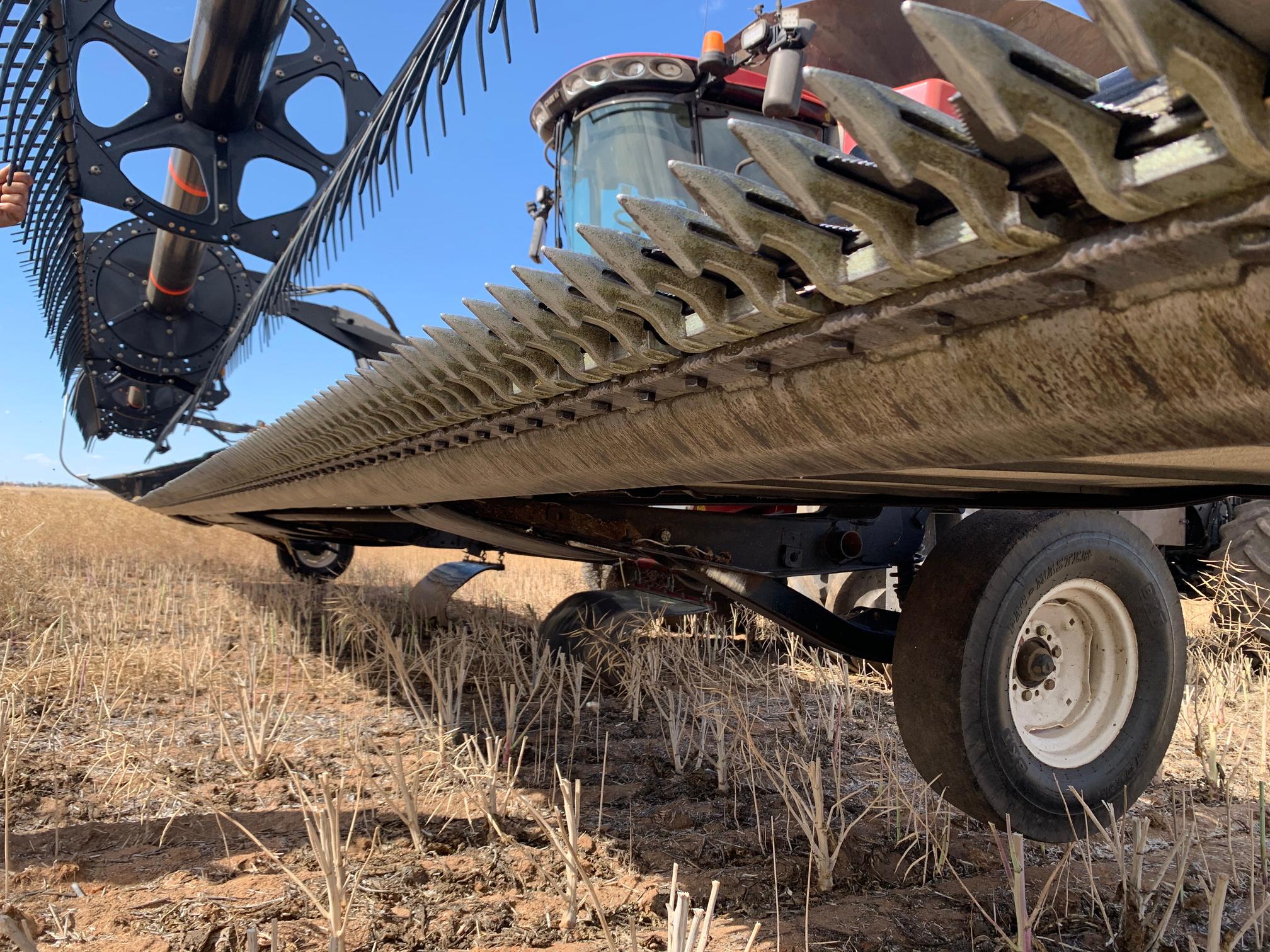
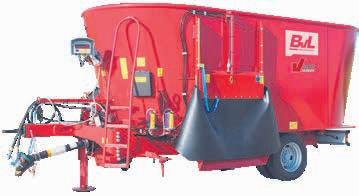
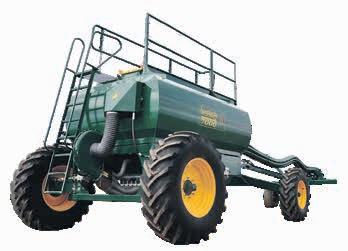
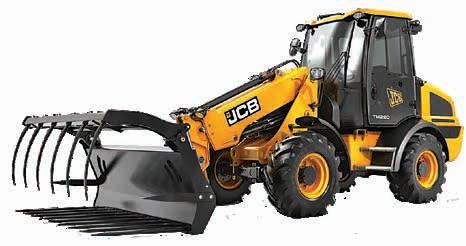

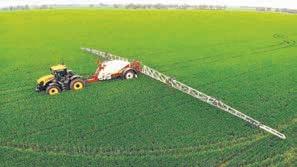



Vennings
Vennings staff are looking forward to returning to the Mallee Machinery Field Days this year, with another newly released auger.
The 70-foot long by 12 inch auger will be displayed for the first time on site, and Richard and Andrew Venning encourage people to swing past and have a look.
“We have needed to develop a longer, faster auger to tackle the high silos that are being used for on-farm storage,” Andrew Venning said.
“Vennings can now provide a powerful three-cylinder 36hp or four-cylinder 48hp Yanmar water cooled diesel engine for all augers 50-60-70 foot long.
“This motor drive has been developed to lift those heavy commodities up the long and large diameter augers at faster speeds.
“We can still supply Vanguard petrol motors by Briggs and Stratton, such as the 40hp EFI Vanguard.”
Mr Venning said the new auger was made with a heavier top and bottom frame and support track to take the extra weight.
“It also has a newly designed cradle with an actuator that lowers the motor to tension the belt drive,” he said.
“This actuator adjusts as the belt stretches.
“All the Vennings’ self-propelled

are mechanically driven, and are self-propelled with hydraulics for ease of operation and ease on the back, steering and moving around the paddock or yard.
“It’s as simple as sitting on the seat and driving it around.”
Also standard is the fire extinguisher, steel hopper, tow hitch, two work lights and banded belt drive with 25 per cent higher transmission efficiency than conventional wrap single belts.
Safety items include oversize signs and flags.
Mr Venning said towing was easy
as they were legal to tow at sign posted speed limits with an inbuilt electric brake controlled axle with large Sunraysia wheels.
He said the company would also have on display a 31,000 litre Cestari chaser bin.
Vennings has been importing the Cestari chaser bins since 2010.
“The bins have been well-received by the farming community,” Mr Venning said.
Made in Argentina, Cestari offers clients the opportunity to have a wagon style bin.
“Sizes available are from 10,000
up to 43,000 litres in capacity in colours that match the harvester or tractor that is pulling the bin,” Mr Venning said.
Richard Venning said the company mainly imported John Deere green or Case red, but also has the opportunity to purchase other colours.
Richard and Andrew Venning will be on site to discuss all your bulk-handling needs. They can also discuss seed and super units Groupers grain cleaners for onsite cleaning chaser and chassis bins for harvest.
“Come in and say hi at site 74,” they said.


A family business that has been locally owned and operated since 1999, The One Cleaning Service is the business for all your cleaning needs.
The Tucker family are proud owners and have made a well-known name for themselves across the Wimmera, Mallee and Grampians.
After more than 25 years in business, they have developed a very good and loyal, but ever-growing clientele across the region; a credit to their outstanding, hard work.
The One Cleaning Service provides a variety of cleaning services, such as general cleaning, tile and grout cleaning, upholstery cleaning, and window cleaning –both inside and out.
The One Cleaning Service also offers specialist cleaning, from exit and empty house cleans, to home help, NDIS and aged care cleans, commercial and domestic cleans, steam cleaning of carpets, and stripping and sealing of vinyl floors.
The One Cleaning Service is available by appointment.
People can visit the Tucker family in their office at 4 Bradburys Lane, Horsham, or call 5382 2387 to obtain a free, no obligation quote for all their cleaning needs.
The Heliodor is a true all-rounder: it is ideally suited not only for shallow stubble culti-vation of light and medium soils, but o ers outstanding performance even in seedbed preparation for mulch seeding and after ploughing!
The Heliodor is a true all-rounder: it is ideally suited not only for shallow stubble culti-vation of light and medium soils, but o ers outstanding performance even in seedbed preparation for mulch seeding and after ploughing!
Bene t from its numerous other advantages:


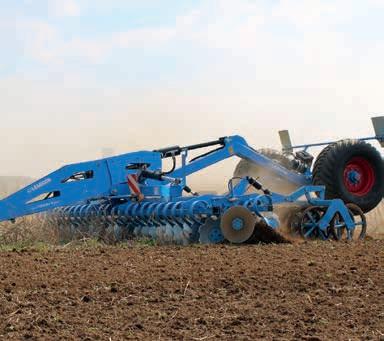
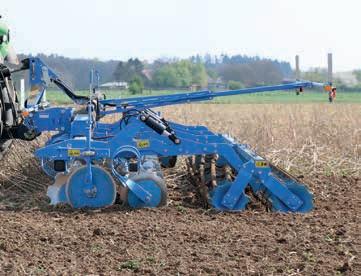
Your local dealer for Western Victoria
Your local dealer for Western Victoria

Your local dealer for Western Victoria
Bene t from its numerous other advantages:
The Heliodor is a true all-rounder: it is ideally suited not only for shallow stubble culti-vation of light and medium soils, but o ers outstanding performance even in seedbed preparation for mulch seeding and after ploughing!
Bene t from its numerous other advantages:
■ The optimum angle adjustment of the discs ensures good penetration and intensive mixing
■ The optimum angle adjustment of the discs ensures good penetration and intensive mixing
■ Maximum clearance to prevent clogging
■ Maximum clearance to prevent clogging
■ The optimum angle adjustment of the discs ensures good penetration and intensive mixing
■ Maximum clearance to prevent clogging
■ Low lifting power requirement due to low weight
■ Low lifting power requirement due to low weight
■ Flexible uses for both soil cultivation and tillage
■ Flexible uses for both soil cultivation and tillage
■ Low lifting power requirement due to low weight
■ Flexible uses for both soil cultivation and tillage
■ Hydraulically adjustable levelling tines for optimum levelling
■ Hydraulically adjustable levelling tines for optimum levelling
■ Hydraulically adjustable levelling tines for optimum levelling lemken.com





August 6 & 7, 2025 at Speed
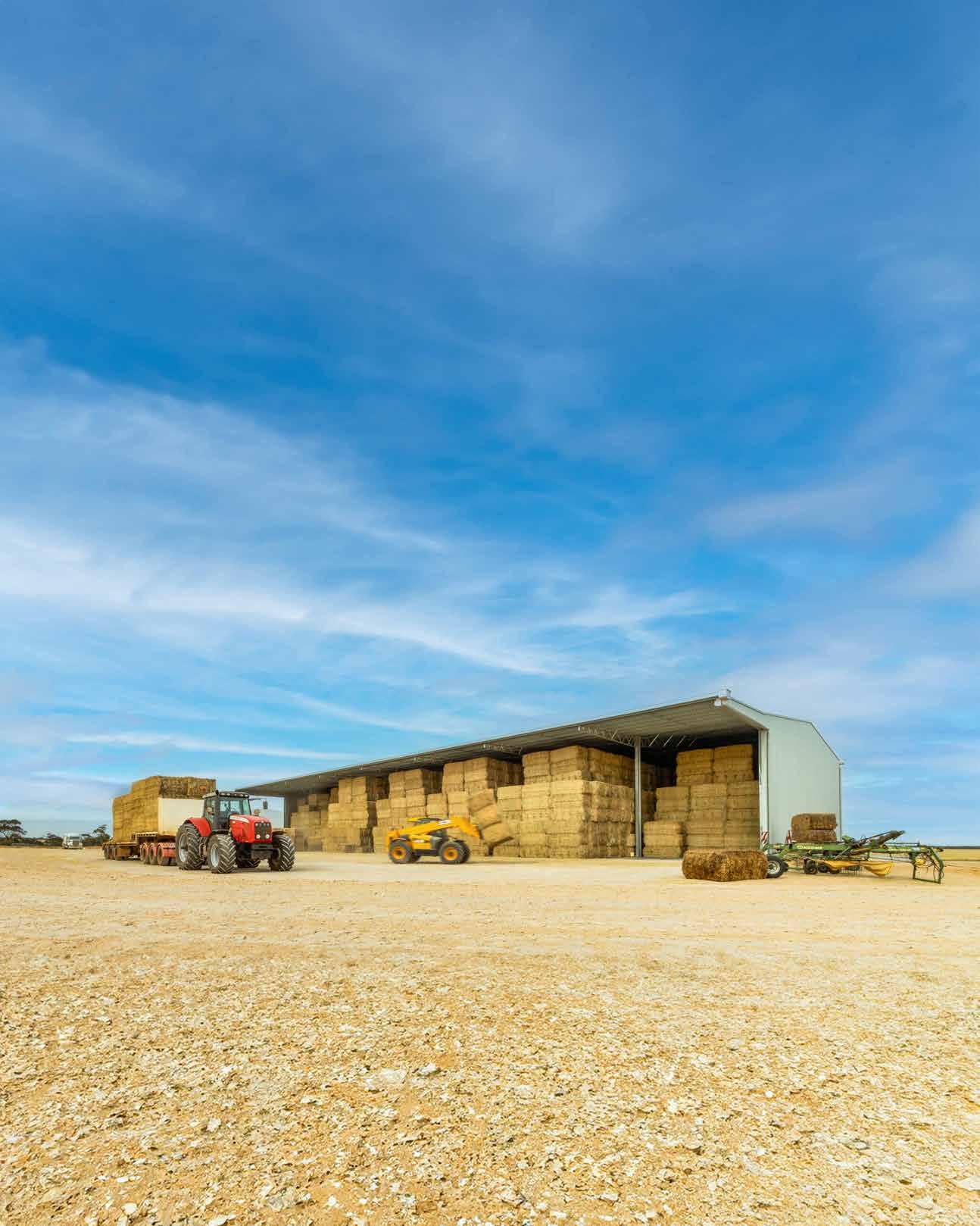




Exhibitor profile
Exporter Johnson Asahi is celebrating 30 years of service and growth as a joint business venture in the international hay processing industry.
Now situated at Dooen in a 24-hour hay processing facility to accommodate increasing demand, the Johnson name has been synonymous with premium hay and straw products for more than a century.
Operations manager Rusty Hier said Johnson Asahi now employed more than 40 staff, who were committed to excellence.
“We reliably deliver high-quality products to agricultural communities worldwide,” he said.
“Our hay and straw products provide essential nutrition for livestock and superior bedding solutions.
“We are accredited by FeedSafe, a recognised quality assurance accreditation program for the Australian stock feed industry.
“Quality control, safety, sustainability and continuous improvement are at the forefront of mind for all Johnson’s employees.”
Johnson Asahi was formed in August 1995, when Johnson’s and long-term client Asahi Industries, now Asahi Agria, agreed to form a joint venture company and centralise Johnson’s existing east coast hay plants to one location in Horsham.
“As part of our desire to expand and improve, in early 2023 Johnson Asahi opened our new state-of-the-art production facility in Dooen,” Mr Hier said.
“The partnership has grown from strength to strength, with the company now exporting over 100,000 tonnes of hay and straw each year.”
Mr Hier said Johnson’s core values were based on family values, respect, genuine care and providing high quality feed for customers.
“With a focus on communication and trust, the purchasing team at Johnson Asahi listens to producers and works seamlessly with them to secure long-term relationships,” he said.
“Our decades-old joint venture partnership is testament to Johnson’s ability to maintain long standing relationships with our partners, suppliers and customers.”
Mr Hier said their unique, friendly style of business allowed staff to enjoy the chal-
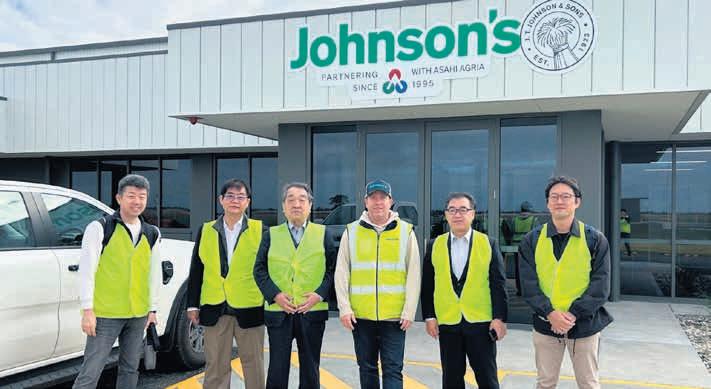
lenges of the business while having the scope to grow professionally as opportunities arose.
“The Johnson’s Group currently employees more than 100 staff in its South and West Australian facilities, and more than 40 in Victoria – and we are growing,” he said.
“There is a wide range of exciting employment opportunities at our new Dooen facility.”
Johnson Asahi will have representatives attending the Mallee Machinery Field Days.
People can also visit their website www.jtj.com.au for more information.



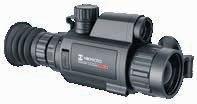
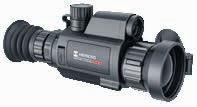




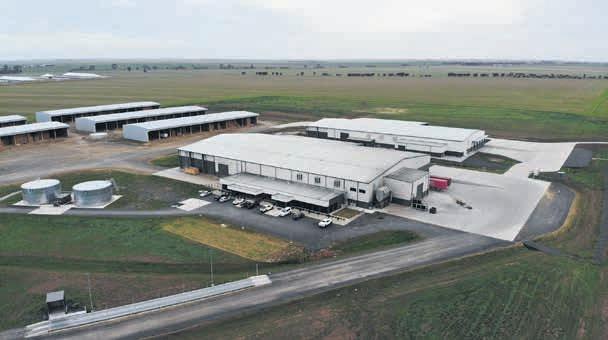













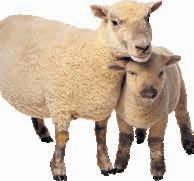








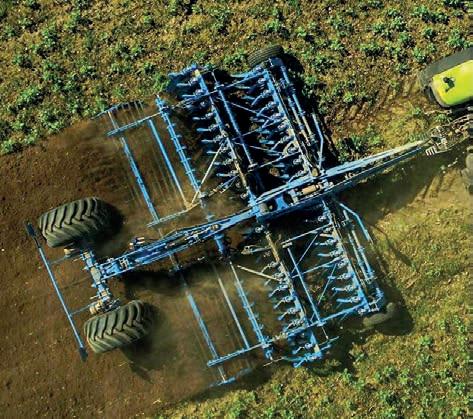
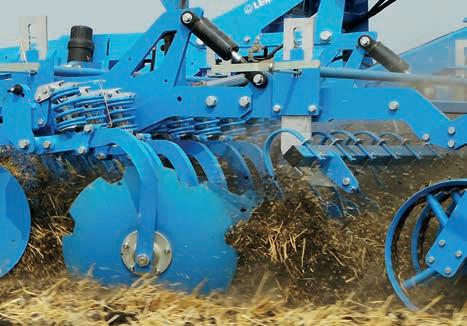



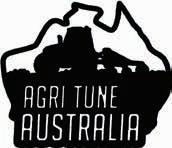
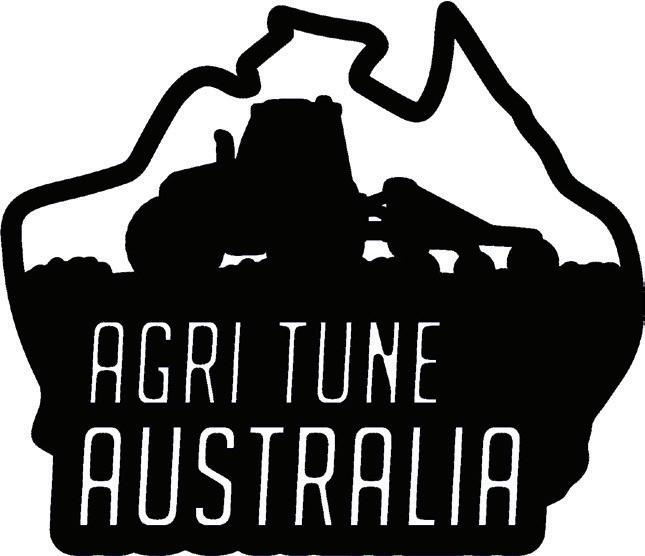
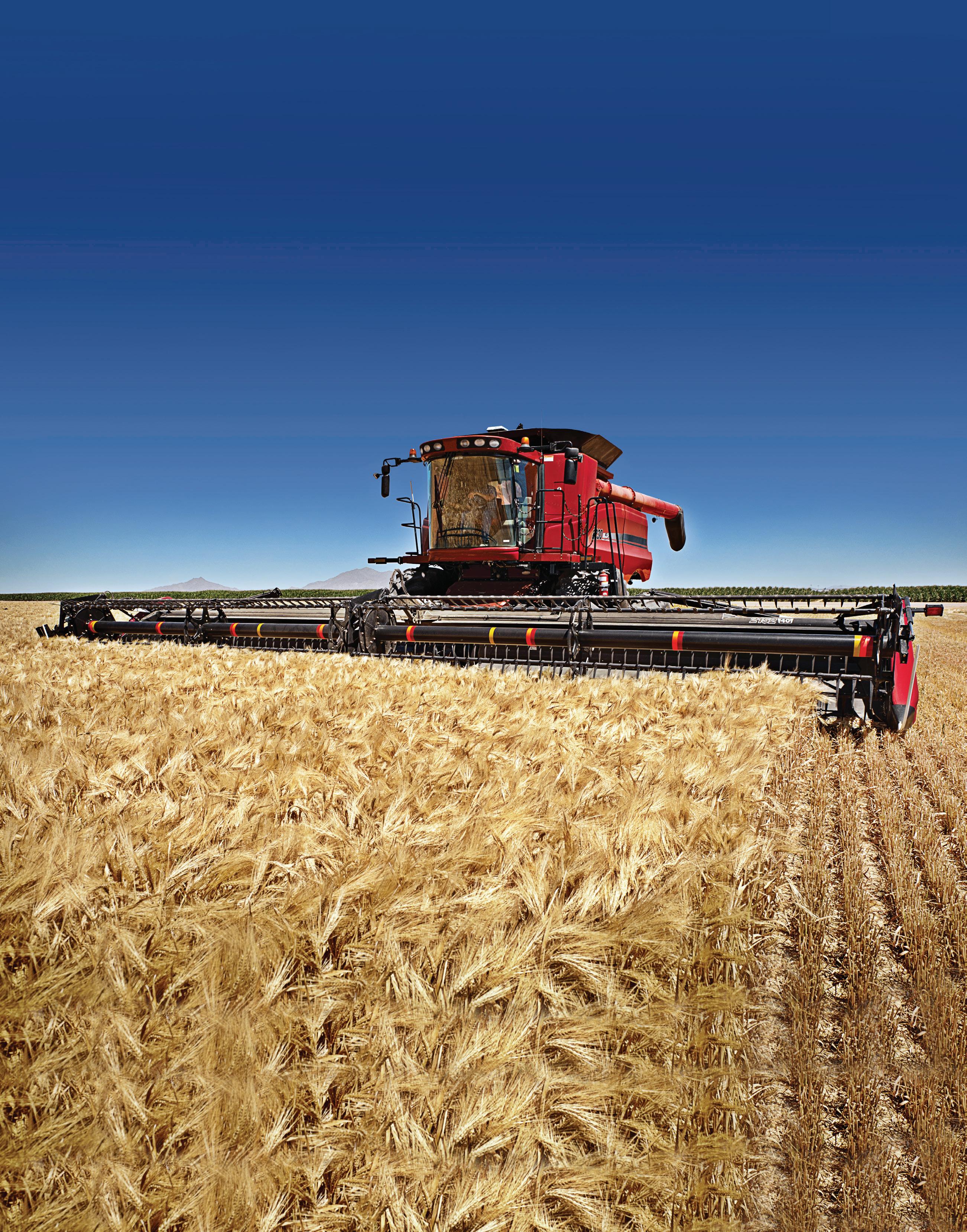

HorshamMotor Company has some new staff, a fresh approach, and a winter giveaway –there has never been a better time for people to stop by the business.
Company dealer principal Mark Riedl said Damien Shipsides was now ‘leading the charge’.
“Damien has stepped into the role of workshop controller and technical advisor,” he said.
“He has years of hands-on experience and a passion for precision, and is already making a big impact.
“He is streamlining workflows, enhancing efficiency, and ensuring every vehicle receives the expert care it deserves.”
Mr Riedl said there were two new staff members inside the dealership, with Emily Clarke and Brock Loveday serving at the front counter.
“We’re thrilled to welcome Emily and Brock to the team as the new friendly faces at our front counter,” he said.
“They’re bringing a fresh spark to our customer service experience, whether you are booking a service, picking up your vehicle, or just dropping by with a question, the team is here to help –friendly, efficient, and always ready to assist.
“And here’s the real kicker – we’re turning up the heat this winter with our ‘Service-to-Win a RAV4’, plus a $5000 gift card to spend on Toyota genuine
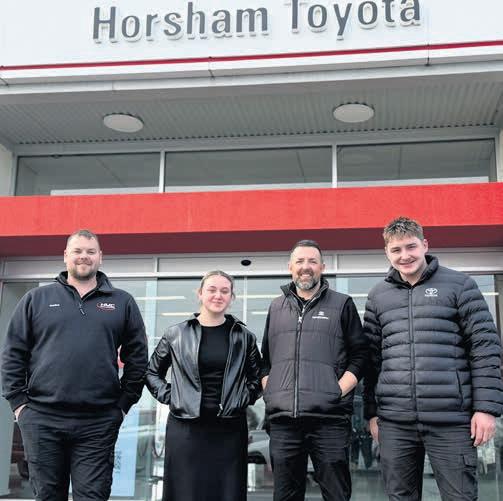
products and services, or one of 10, $100 vouchers – but conditions and exclusions do apply.
“It’s our way of showing appreciation for those who continue to trust us with their vehicle care beyond the standard programs.”
Mr Riedl said the dealership was alive with activity, and momentum growing.
“With expert technicians in the workshop, outstanding service at the front desk, and exciting promotions, the Horsham Motor Company service department is absolutely buzzing,” he said.
“We invite people to see what’s new and experience the Horsham difference. This winter, we’re not just servicing vehicles – we’re raising the bar.”
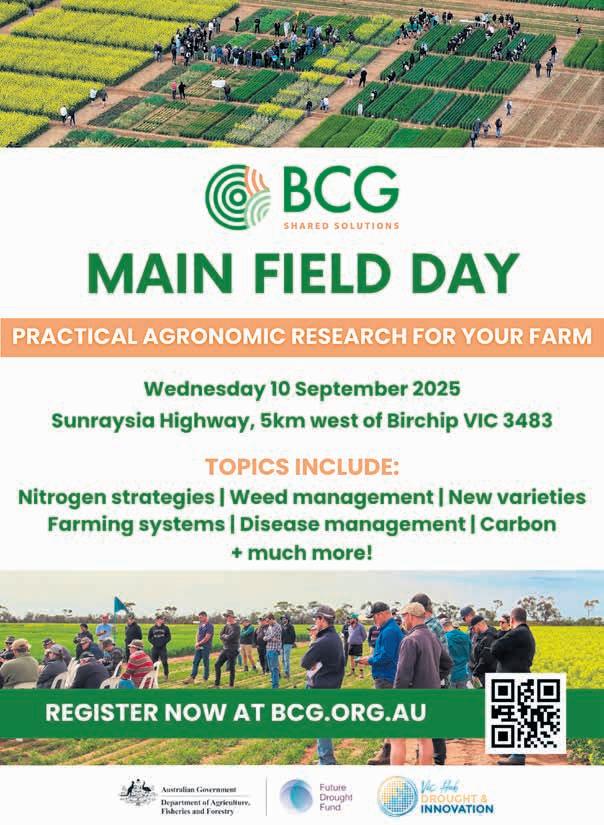


Sivcorp Industries Exhibitor profile
Sivcorp Industries offers a range of energy systems for a variety of applications, from hydro electricity to solar and batteries.
Sivcorp senior consulting engineer Marc Siv said now was a good time for people to change to off-grid living or upgrade their existing power systems – government rebates are still available.
“People who buy a battery can be eligible for a government rebate of up to $16,800,” he said.
“And they can enjoy so many other advantages of our off-grid systems, from no longer having to pay power bills, to having an uninterrupted power supply, so no more black-outs.”
Mr Siv said a key pillar of Sivcorp’s complete, off-grid solar energy system was the adaptable solution for new and existing systems, keeping generated solar energy on reserve until it was needed in the premises.
“There is great flexibility in terms of storage capacity and plant power,” he said.
“Our systems offer the ideal solution for high self-consumption and intelligent energy management for nearly all applications.
“The system is combined with lithium-ion batteries to provide an industry-leading storage solution for residents and businesses that do not wish to rely on
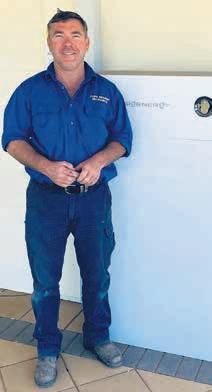
the public grid connection. Our batteries not only provide a longer life solution than lead-acid technology, but they are also more resistant to the effects of temperature, charge more quickly and deliver energy rapidly to meet the demands of modern off-grid applications.”
People can visit Sivcorp’s website at www.sivcorpindustries. com.au or visit them at the field days.
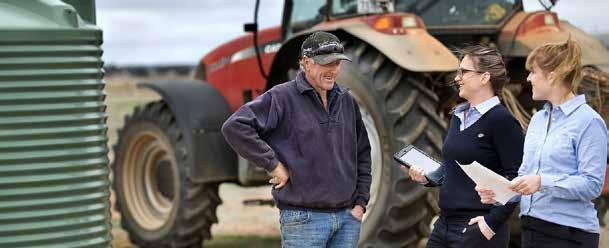



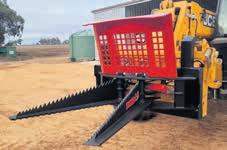
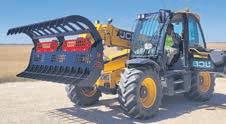


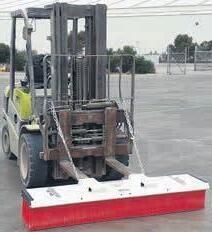

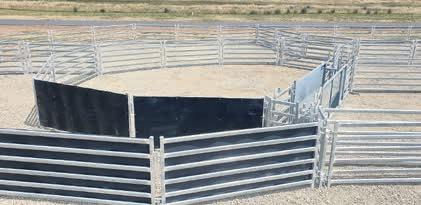



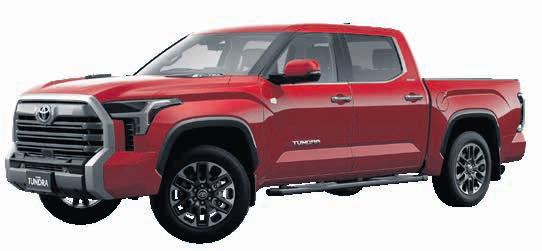












Hay sheds are valuable infrastructure, and setting up on-farm storage ahead of harvest is forward-thinking and a proven way to future-proof a farming business, providing opportunities regardless of how the season plays out.
Action Steel building consultant Jason Stone said new hay shed projects were proving popular this year, and looked to be smart investments.
“The 4000-bale shed recently completed by Action – The Big Shed People at Patchewollock is a great example of how to maximise capacity and lower the storage cost per bale,” he said.
“Besides starting with a tried-andtested 64-metre by 24-metre hay shed kit, the secret to success is a well-planned project.
“While the 64-metre by 24-metre hay shed kit is a common choice. It typically has a height of 7.5 metres which allows bales to be stacked eight high.”
Mr Stone said for the project, the kit shed design had been tweaked and the height increased to nine metres, for two purposes.
“Firstly, increasing the height of the shed is a cost-effective way to increase the capacity of the shed compared to either increasing the length or width of the shed,” he said.
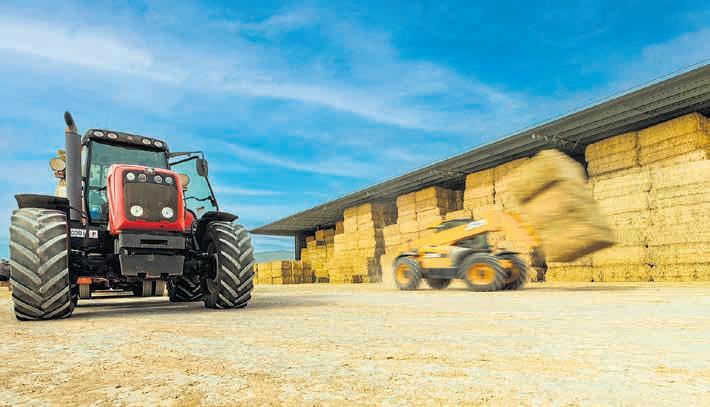
“Secondly, it is a good idea to increase the height of the shed to provide additional clearance when there is a canopy; this is because a canopy typically decreases the clearance height by about 500mm.
“A cantilevered canopy has many benefits, including being a costeffective way to gain some extra storage space.
“For example, the combination of the 24-metre span and eight-metre canopy is more cost-effective than a 30-metre span hay shed.”
wide bay, which allowed three big bales to be stacked across, between the columns, for an efficient use of space and good airflow between the bales.
“The building consultants at Action often recommend upsizing the bay spacing to 8.5 metres wide,” he said.
“While this doesn’t increase the capacity of the shed, it does provide more ‘wiggle room’ to make loading and unloading the shed easier and less stressful.
“It is hard to go wrong with an open-front shed, and that is certainly true for hay shed projects.”
configuration was the most effective way to protect hay from weather damage, while still ensuring the hay could be easily accessed.
“Another advantage of the openfront hay shed is that it can be easily customised, such as installing sliding doors in the back wall or gable end –or both – to make it easier to access the hay at the back of the shed,” he said.
People can visit the Action team at the Mallee Machinery Field Days at site 98 to chat about farm shed projects. August 6 &
Mr Stone said the hay shed project also used the popular eight-metre-


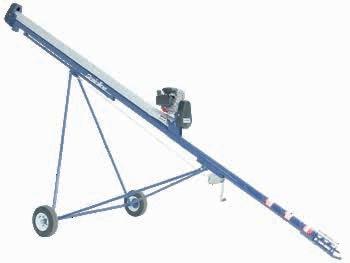
Mr Stone said the open-front shed

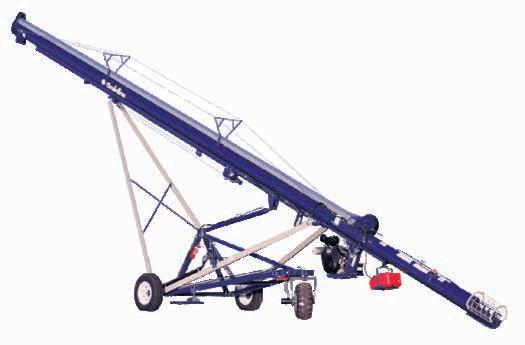
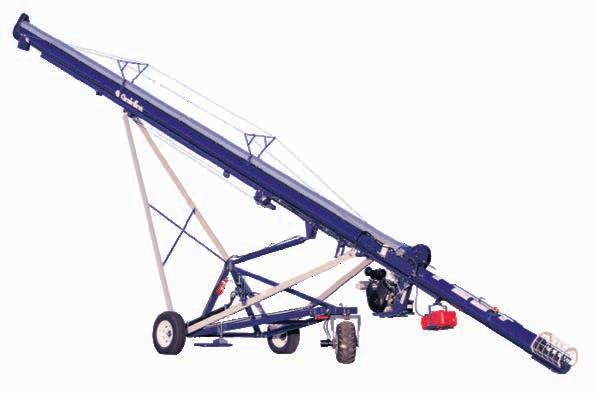

Real-world experience and a commitment to quality drives Smallaire in its delivery of products and advice to help farmers get more done with less hassle.
Smallaire director Lolita Small said she was excited for people to see what made Smallaire stand out.
“We’re excited to be exhibiting at this year’s Mallee Machinery Field Days – and even more excited about what we’ll be bringing with us,” she said.
“At Smallaire, we don’t just supply parts –we deliver smart, hard-working solutions that help farmers get more done with less hassle.”
Smallaire produces air seeder components, high-pressure blowers, and high-performance agricultural machinery parts.
“Everything we offer is backed by realworld experience and a commitment to quality that speaks for itself,” Ms Small said.
“We invite people to visit us at our site to see first-hand what makes us different.
“We have genuine understanding of local farming challenges; we offer expert advice and top-shelf gear that’s built to handle the tough Australian conditions.
“We’re here to help keep your operation moving forward.”
People can visit site 152 to see Smallaire’s latest range, have a chat with the team, and find out why more and more farmers are making the switch to Smallaire components.




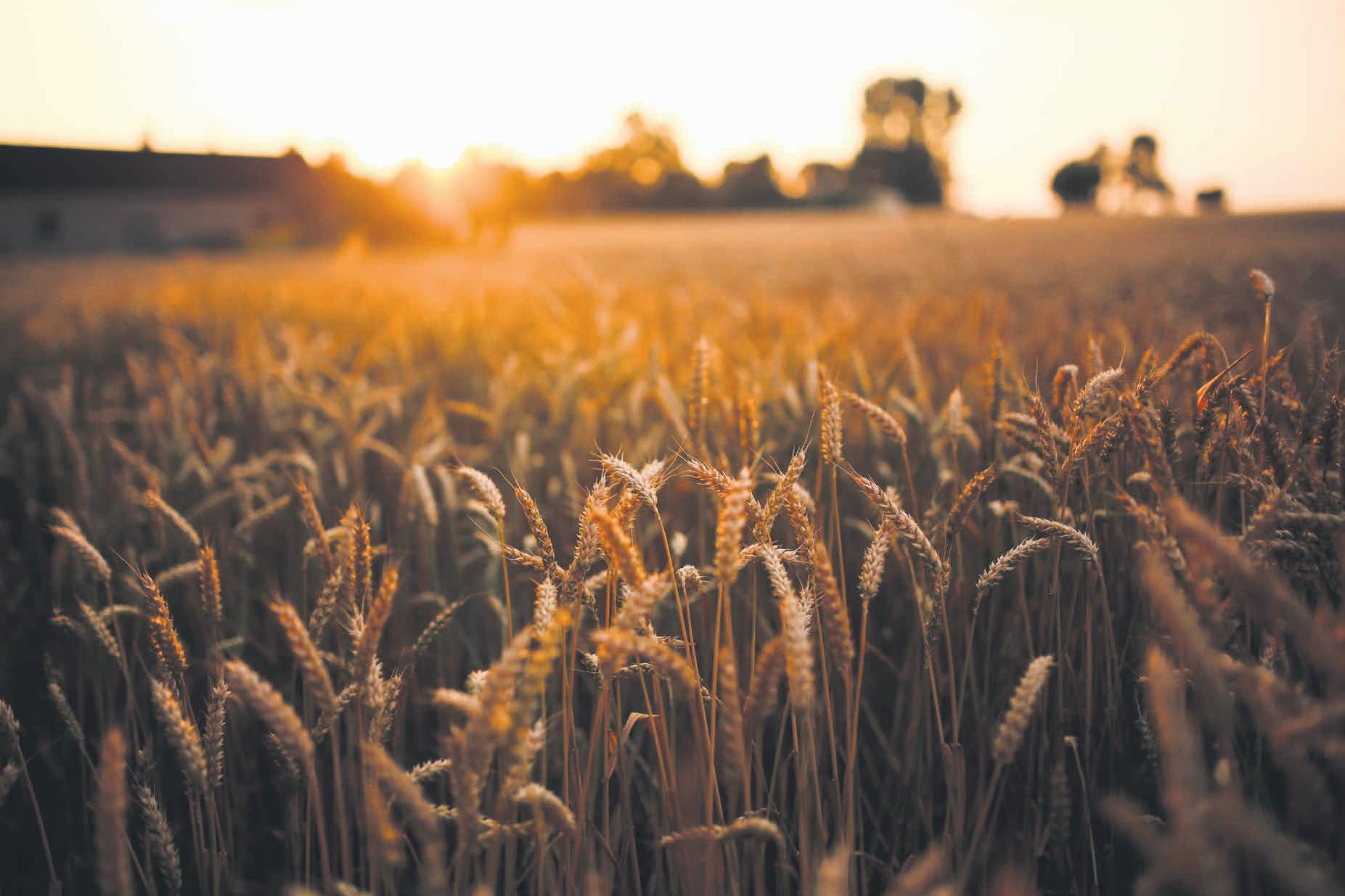



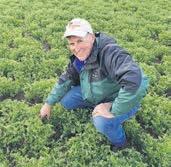
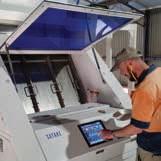
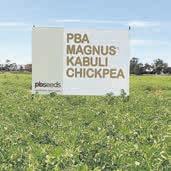

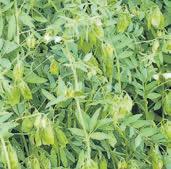



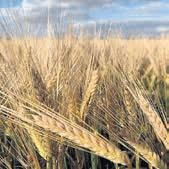

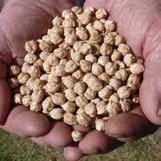
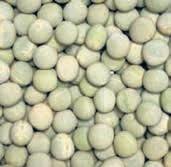

















The all-new sixth-generation Toyota RAV4 has been revealed, and it’s bringing big changes to one of Australia’s most popular SUVs.
With a striking redesign, advanced safety and multimedia features, and Toyota’s first-ever plug-in hybrid electric vehicle, PHEV, powertrain for Australia, the next-generation RAV4 is set to make a powerful impression when it arrives in the first half of next year.
For the first time, Australians will be able to choose a RAV4 with a PHEV system, offering impressive electric-only driving capability.
The PHEV will be available alongside Toyota’s popular and efficient hybrid options in both 2WD and AWD configurations, providing more choice for drivers looking to balance performance with efficiency.
Also making its debut is the new GR Sport flagship, featuring exclusive PHEV AWD performance, motorsport-inspired styling, upgraded suspension, and a host of interior enhancements including GR logos, red accents, and sports seats.
Designed for modern lifestyles, the new RAV4 includes an updated multimedia experience powered by Toyota’s Arene software platform, delivering faster performance, AI-

enabled functionality, and seamless over-the-air updates.
The interior offers improved screen clarity, a new home-screen layout, enhanced voice control, and Google Points of Interest for real-time navigation.
Safety is also front and centre with the latest Toyota Safety Sense technologies.
New and improved features include front cross-traffic alert, an upgraded blind-spot monitor with rear-vehicle approach indicator, expanded lanechange assist, and enhanced obstacle
detection through the pre-collision system.
A panoramic view monitor and advanced parking support, including smartphone-operated remote parking, further elevate convenience and confidence behind the wheel.
Toyota Australia vice-president of sales, marketing and franchise operations Sean Hanley said the new era RAV4 continued the legacy of the first RAV4, which came to Australia more than 30 years ago.
“When it first arrived in Australia in 1994, the RAV4 appealed to cus-
tomers with its family-friendly utility, bold design, and signature Toyota dependability,” he said.
“The all-new sixth-generation RAV4 will carry on that legacy while introducing exciting new Toyota-first technologies.”
Local specification and model line-up will be announced closer to launch. In the meantime, customers can register their interest online.
To find out more or express interest locally, people can visit Stawell Toyota, 72-76 Longfield Street, or call 5358 1555.

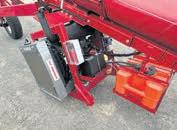


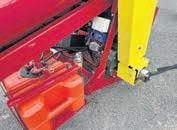
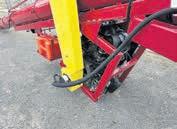

Despite good rainfall recently, many farmers will find their dam not filling due to lack of saturation.
Agriculture Victoria land management officer Clem Sturmfels said the hot, dry summer and lack of autumn rain had left soil moisture levels very low for this time of year.
Factors such as soil structure and depth affect the rate of saturation – deep and well-structured soils often need more than 200mm of rain, while shallower soils require around 150mm.
“In normal years, actively growing pastures use much of the stored soil moisture, however, plant growth and water use this year will be low due to the very late break,” Mr Sturmfels said.
“Even in an average year, plenty of rain is required to fill farm dams.”
Mr Sturmfels also outlined the importance of considering a landholder’s catchment area.
“A catchment area of five to 10 hectares is required to fill a small one megalitre dam,” he said.
“Contour banks can help to increase the catchment area of a dam by collecting water from the adjoining area.”
Contour banks only need to be 200 to 300mm high and built on soil that is not prone to tunnel erosion. They can be installed quickly using a modern articulated grader.
Permits or licences may be required before undertaking the work.
People are advised to contact their council planning officer and water authority for guidance.


• Shaft drive for maximum ef ciency
• Hydraulically raised / lowered
• Hydraulically driven around
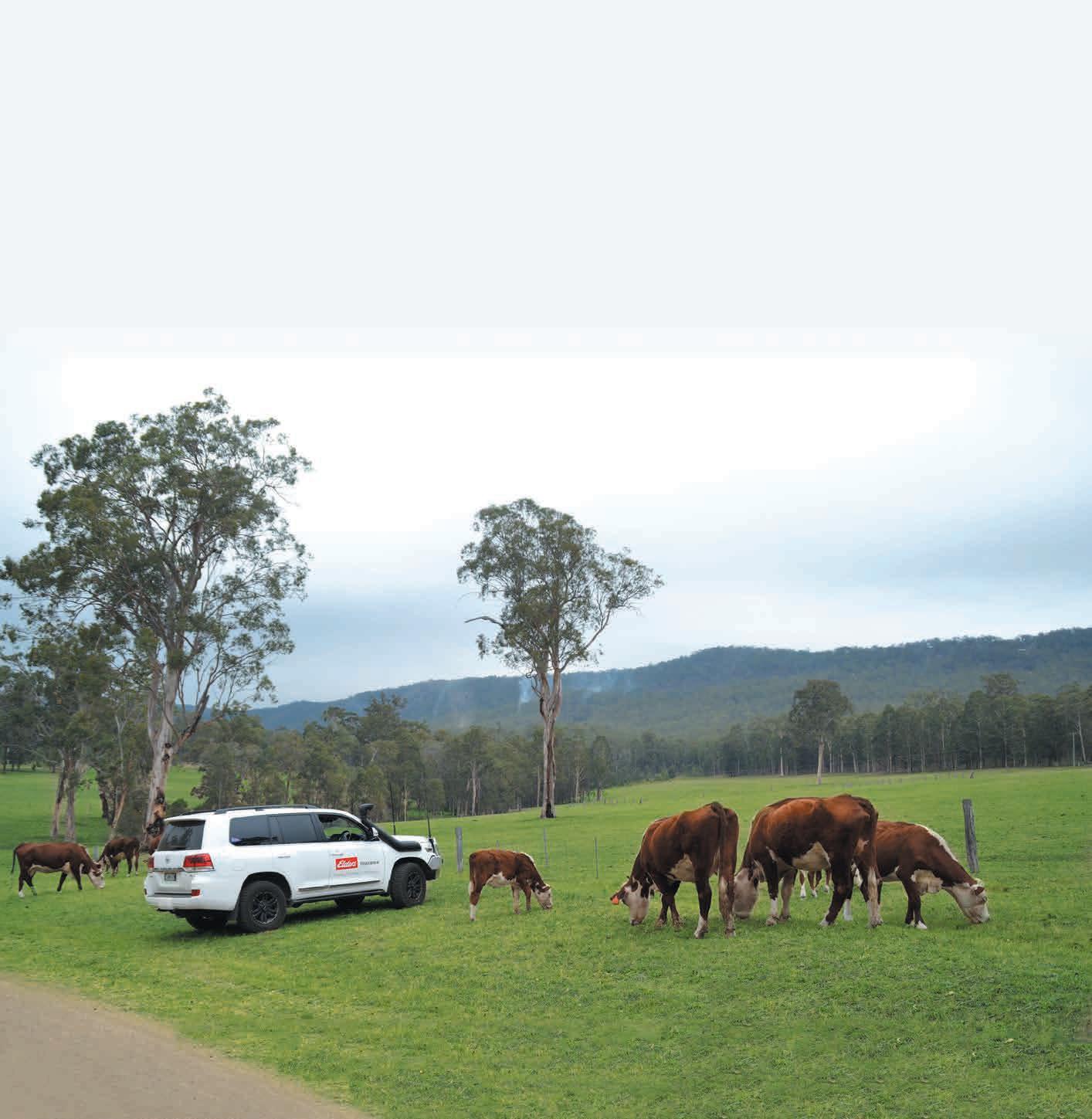





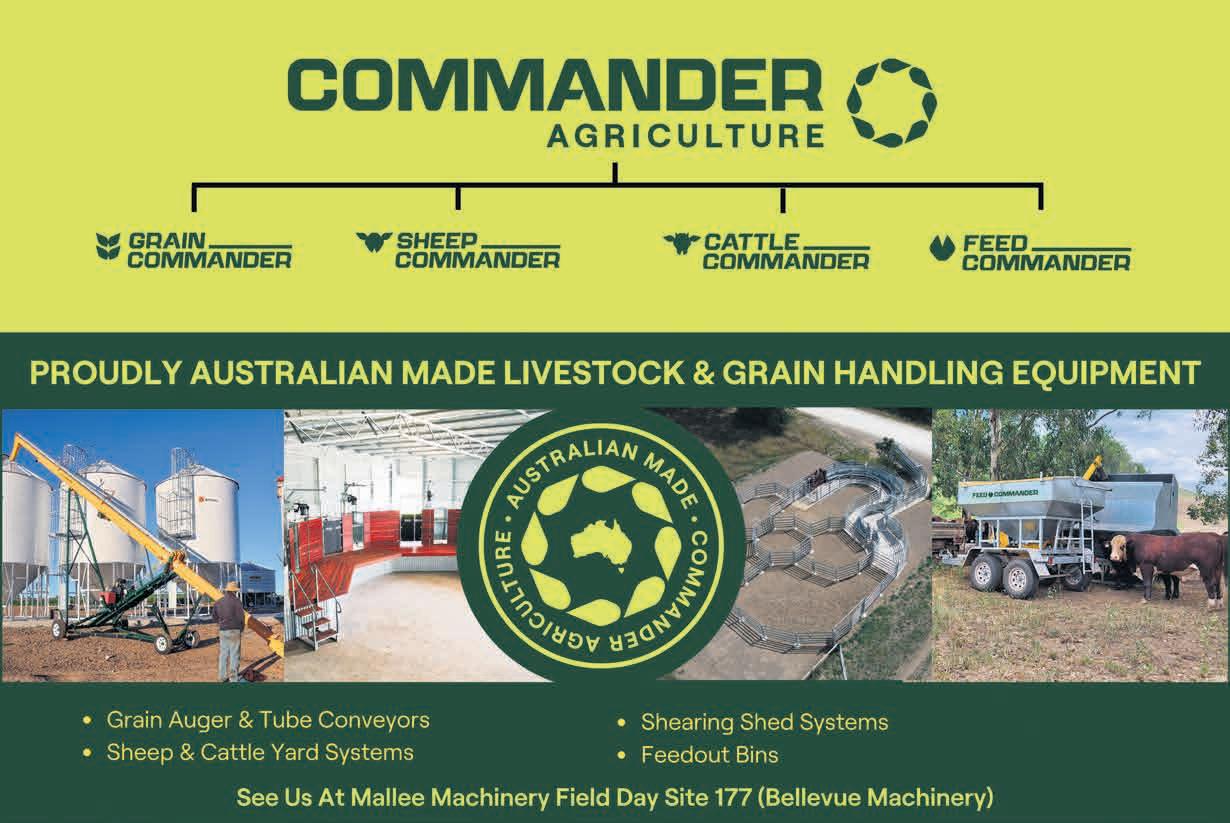



The Southern Skin Cancer Clinic is looking forward to visiting the Mallee Machinery Field Days this year.
We are excited to have the opportunity to attend and provide bulk-billed skin cancer checks to the locals and surrounding communities - you will find us in the health tent located in the Craft and Interest site, next to the CFA and near the main office.
Our team is extremely passionate about visiting regional areas, which often lack these important medical services.
We understand it is hard to find the time to get a check-up, which is why we have brought our clinic to you – to make it as easy as possible to have a skin cancer check-up.
We have seen thousands of patrons in rural Victoria and New South Wales across the years, finding hundreds of skin cancers including more than 400 melanomas.
We continue to spread the word of the importance to have at least one skin check every year - especially for

farmers who spend most of their time outdoors - it just might save your life. Skin cancer does not discriminate and is not, as some people might think, an old person’s disease. Sun damage just keeps adding up and eventually is likely to become a skin cancer.
Statistically, two out of three people in Australia will develop some type of skin cancer before the age of 70, which shows the importance of being Sunsmart, by protecting your skin and eyes from excessive sunlight and getting regular skin checks.
Have you noticed a mole or freckle changing across a period of months? Has it grown in size, shape, become mottled in colour or irregular in outline?

Do you have a mole you persistently scratch, or a mole that is lumpy or bleeds easily when rubbed with a towel and turns into a sore that doesn’t heal? These are all common signs you may have a skin cancer.
If you have never had a check before or are due for a yearly check-updon’t put it off any longer - make sure you, your family and friends visit our friendly, caring and knowledgeable team for a bulk-billed skin cancer check.
The saying ‘prevention is better than cure’ is particularly relevant to Skin Cancer and can be lifesaving with early detection so make sure you visit us at the Mallee Machinery Field Days.


For over 180 years, our business has been integral to the Australian agricultural industry.
Nutrien Ag Solutions is an integral part of the Australian agricultural industry. Our generations of experience have made us experts in a range of di erent farming areas, including precision farming services, marketing livestock and wool, agricultural services, water, finance, insurance, merchandise and real estate.
We are the largest distributor of both farming supplies and fertiliser in Australia and provide unparalleled access to solutions. Our team of more than 4,000 farming experts are committed to upholding the mission and values that make us the ag retailer of the future.



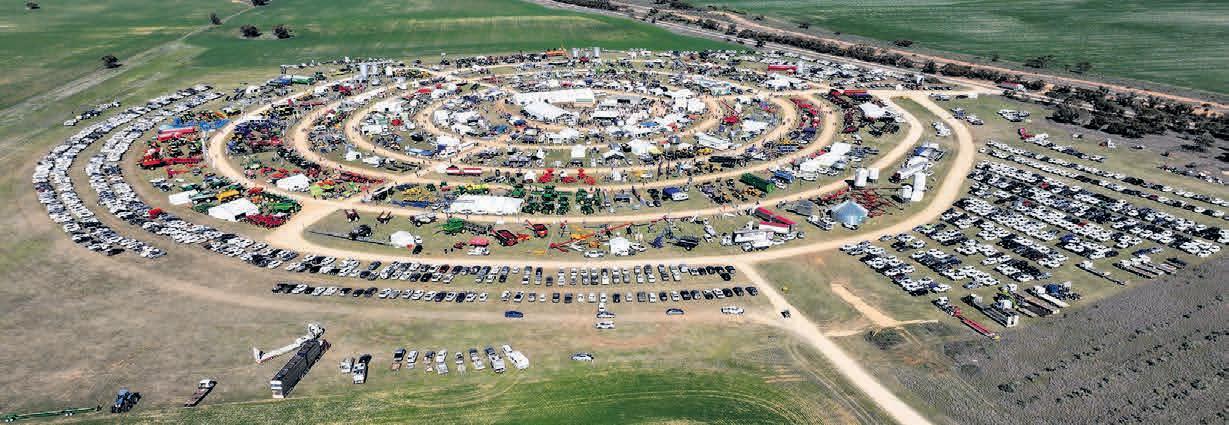
SPECTACULAR SITE: The Mallee Machinery Field Days have grown exponentially across the past four years, driven not only by the tireless commitment of the Speed Lions Club, who host the region’s largest agricultural event, but also by the shared enthusiasm of exhibitors nationwide, united in their support for the region’s farming communities. Pictured above, the unique, circular layout is a drawcard for many; far right, triplets Scarlett, Lilly and Charlee Shine, with police officers Brad Bond and Abby Harrisson at last year’s showcase, and right, Kobe Hallam and Lenny Carter of Horsham, with George Cook, of Hopetoun, explore the 2024 site.
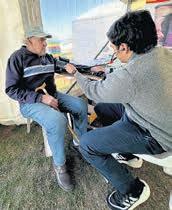

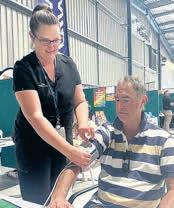

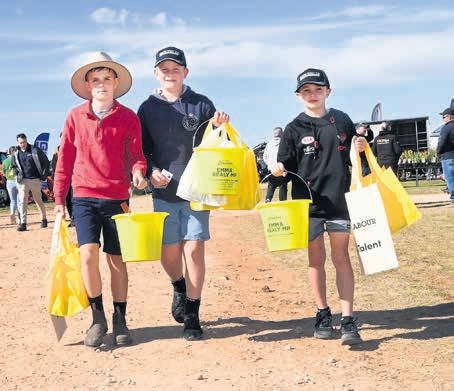


August 6 & 7, 2025 at Speed

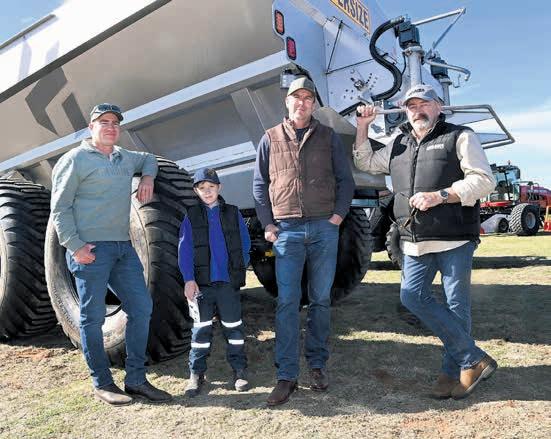



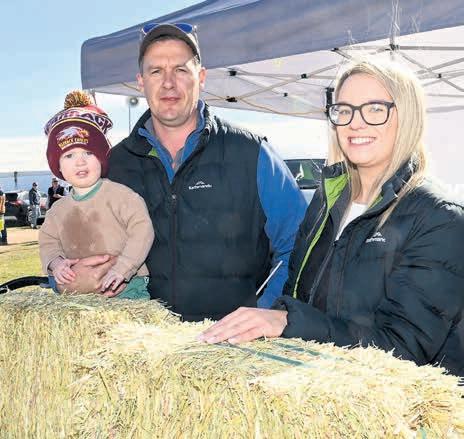
HIGHLIGHTS: More than 8000 people made
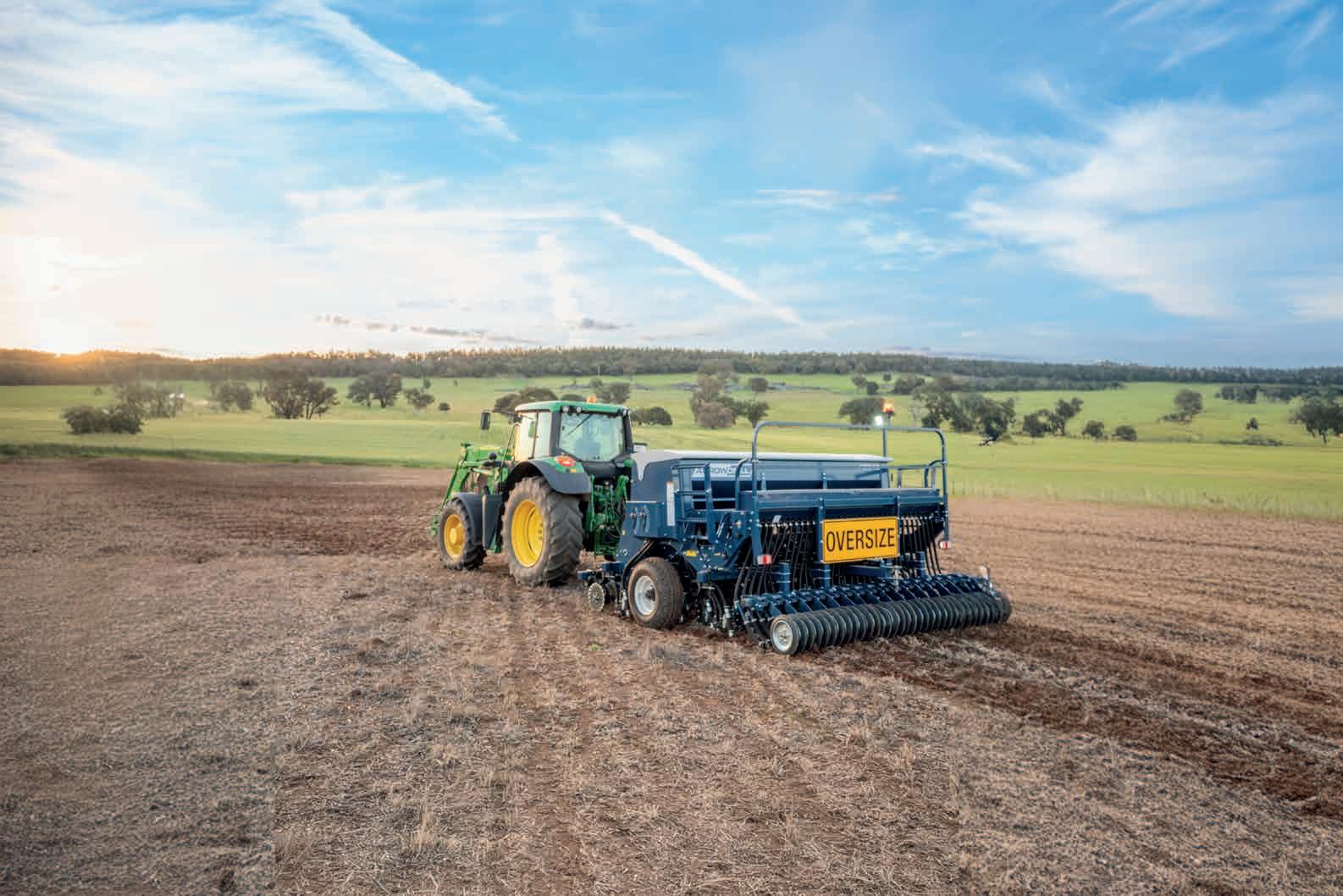


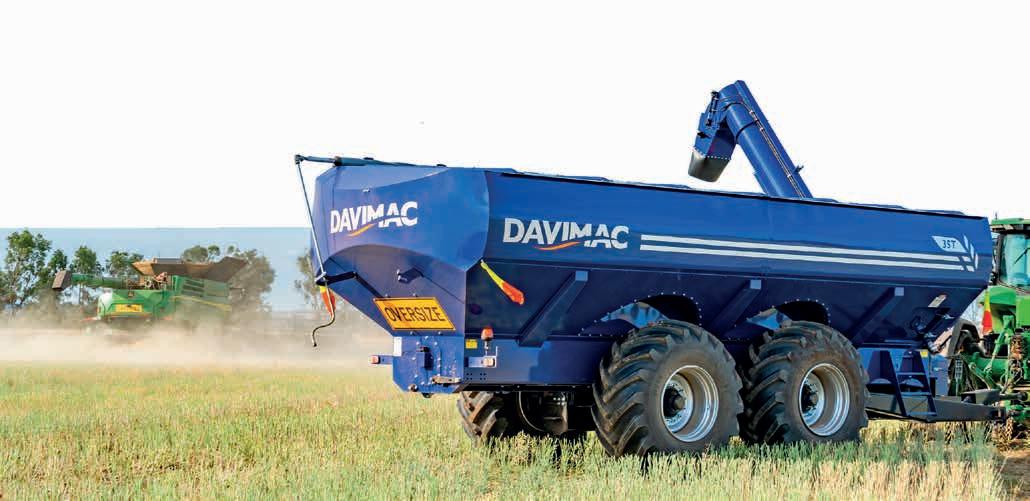
DEEP RIPPERS SEED DRILLS CHASER BINS



2025 FIELD DAY & AUCTION
2025 FIELD DAY & AUCTION
WILL BE HELD AT BALMORAL RECREATION RESERVE
WILL BE HELD AT BALMORAL RECREATION RESERVE
MONDAY, AUGUST 11, 2025
PARTICIPATING STUDS
Glendonald • Gleneden • Glenera North Poll • Glenpaen
Glendonald • Gleneden • Glenera North Poll • Glenpaen
MONDAY 11th AUGUST, 2025
WILL BE HELD AT BALMORAL RECREATION RESERVE
PARTICIPATING STUDS
Mount Yulong Poll • Orrie Cowie • Rock-Bank • Rockbank South Stud Park South • Thornlea • Wurrook GLENELG

Gringegalgona • Kalenea Poll • Kevlyn • Kurra-Wirra • Melrose
Gringegalgona • Kalenea Poll • Kevlyn • Kurra-Wirra • Melrose
Glendonald • Gleneden • Glenera North Poll • Glenpaen
Mount Yulong Poll • Orrie Cowie • Rock-Bank • Rockbank South Stud Park South • Thornlea • Wurrook
Gringegalgona • Kalenea Poll • Kevlyn • Kurra-Wirra • Melrose
Mount Yulong Poll • Orrie Cowie • Rock-Bank • Rockbank South Stud Park South • Thornlea • Wurrook GLENELG
MONDAY 11th AUGUST, 2025 OPEN 10am to 4pm • Auction 1pm
Inspect our display at Sheepvention in Hamilton
Inspect our display at Sheepvention in Hamilton
OPEN 10am to 4pm • Auction 1pm Light luncheon available 3% Rebate to outside agents








Agriculture Victoria authorities are urging farmers to be on the lookout for toxic weeds as they allow stock to graze in areas near water bodies where soil is damp.
Agriculture Victoria senior veterinary officer Paul Beltz said with farmers looking for green areas to keep their stock amid drought conditions, the risk of encountering toxic weeds could increase.
“One of the things we’re seeing is the billabongs or the swampy areas on their properties where they haven’t grazed previously because of the bogginess of the ground, it’s dried out enough – but they need to have a good look and just check for weeds and see if it could be really toxic for their livestock,” he said.
Dr Beltz said ‘quite a few’ noxious plants had become problems for farmers.
“We certainly have seen over this past season issues with dock, fat-hen, soursob, sorghum and unfortunately we’ve also had a couple of outbreaks affected by lesser loosestrife,” he said.
“They are all plants and weeds that will preferentially grow where the land is a bit damp usually and where we’re seeing it dry out and stock being put.
They’re probably common in those areas, so if farmers have a look at the areas before they put their stock
in, which is something I would really strongly suggest, then they should be able to identify them.”
Dr Beltz said there were many resources to help farmers identify potentially dangerous plants.
“There are good apps to put on your phone that can help you identify weeds, or farmers can take a photograph and call in, and we’ll see if we can advise what the weed is,” he said.
“There is also the Agriculture Victoria website, which has a lot of information about the weeds and good photos to help identify them.”
Dr Beltz said death was ‘not necessarily’ an imminent outcome if stock ingested toxic weeds, but it could still have detrimental impacts.
“Livestock have to eat a lot of them in most cases to die, but if you put them in and they’re hungry then they’re going to look at the green pick and hoover it up,” he said.
“One of the things we suggest is having a good look, and the second thing is putting your stock in after they’ve had a feed so they’re not going to hoover up all these green weeds and get the toxic effects of them.
“The stock that are going into the saleyards are getting a good price at the moment, so you don’t want to lose your stock to something that’s preventable.”
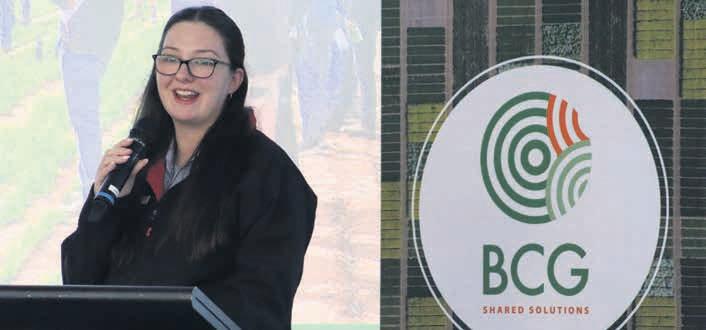
BCG has launched ChatBCG, a digital tool giving farmers and advisors instant access to more than 30 years of trusted, local research anytime, anywhere.
The first tool of its kind in Australian farming systems research, ChatBCG is designed to support faster, more confident decision making on farm by delivering evidence-based answers in seconds.
Unveiled to more than 120 attendees at the BCG Ag Tech Expo in Charlton earlier this month, ChatBCG is set to transform how farmers access and apply insights in real time.
ChatBCG allows users to type a question and receive fast, practical answers grounded in decades of BCG research.
Whether it’s managing dry sowing, interpreting gross margins, or exploring nitrogen strategies, the tool delivers timely support in plain language.
“This tool puts the full weight of BCG’s research behind every question a farmer might ask, whether they’re in the paddock, at the kitchen table, or working with an advisor,” BCG chief executive Fiona Best said.
“It’s part of our commitment to staying at the cutting edge of agricultural innovation and supporting our members through changing conditions and technologies.”
BCG’s communications and engagement officer and ChatBCG project manager Jess Bidstrup said the

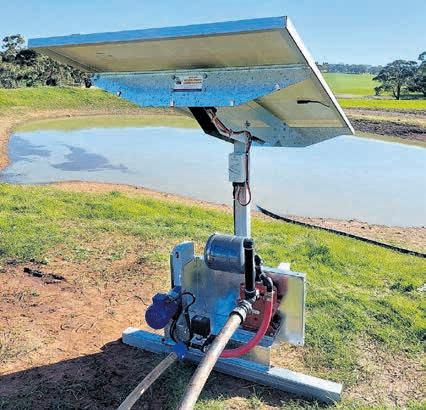
aim was to make it easier for farmers to access the insights they needed, without having to trawl through old reports.
“The beauty of ChatBCG is that it distills complex research into clear, practical answers, and it’s available 24-7,” she said.
For a limited time, non-members can trial ChatBCG free for one month before it becomes a membersonly benefit.
With a BCG membership, users gain ongoing access to the tool alongside the full suite of research updates, technical bulletins, events, and extension activities.
Farmers can trial ChatBCG now or sign up for membership at www. bcg.org.au.




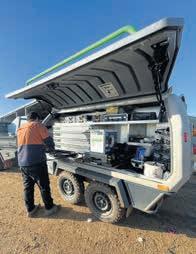


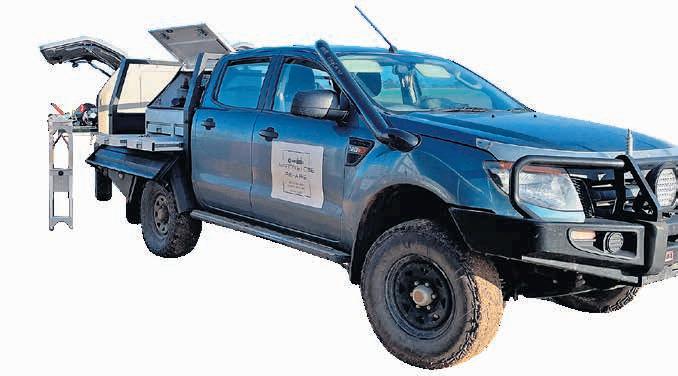







BY COLIN MacGILLIVRAY
Murra
Warra farmer and National Farmers’ Federation president David Jochinke is leading a chorus of voices urging the Federal Government to expand its drought support for farmers through the Regional Investment Corporation, RIC.
Mr Jochinke said the National Farmers’ Federation, NFF, along with member groups Australian Dairy Farmers, NSW Farmers, Primary Producers SA and the Victorian Farmers Federation, was calling on the government to commit to safeguarding the RIC and implementing other findings of an independent review of the Regional Investment Corporation Act 2018.
The RIC is a body set up by the government to provide low-interest loans to farm businesses in response to drought conditions.
Since its inception in 2018, the RIC has provided loans to about 3400 farm businesses, saving farmers a collective $354-million in interest payments.
An independent review of the body commissioned in November 2023 found that concessional loans were effective in supporting the long-term viability of farming businesses, and recommended the government retain the RIC as a way of delivering the loans.
But Mr Jochinke said farmers were in the dark about the government’s plans for the future of the RIC more
than a year after the final report became public.
“We’re concerned the government hasn’t been able to give us information about what they’re planning to do with the recommendations from a report that was written a year earlier,” he said.
“Essentially, RIC is meant to be the major support mechanism from the Federal Government to farmers in drought, and we’re not really sure either what their support is or what their intention is for the future of the program.
“It was recognised as the major mechanism that we could and should use to support farmers in drought conditions, through drought loans that were both affordable and accessible. What we haven’t seen is either of those two issues being dealt with.”
Mr Jochinke also called for a further reduction to interest rates on loans through the RIC.
“At the moment we’re seeing that the interest rates aren’t too dissimilar to bank loans and similarly the amount of time taken to approve the loans isn’t as smooth or doesn’t have a really easy transition, which is another area we believe can be improved,” he said.
“We want to make sure that when farmers do apply for loans that it’s done in a quick manner that doesn’t disenfranchise their current banking arrangements, but also is a meaningful reduction in either the interest paid or the extent that interest isn’t paid for
a loan that is given through the RIC.”
Mr Jochinke credited the Federal Government for acting on several priorities outlined by the NFF in a pre-election wishlist, including visits to drought-affected regions by Prime Minister Anthony Albanese and Agriculture Minister Julie Collins, increased funding for the Rural Financial Counselling Service and the announcement of a 2025 National Drought Forum.
But he called on the government to immediately commit to extending the RIC’s loan capacity beyond the end of the 2025-26 financial year.
“There wouldn’t be too many farmers in the south of Australia who haven’t felt the pinch of this drought – everything from trying to get access to fodder to establishing pastures and even their crops and looking after their livestock is a real struggle out there,” he said.
“It makes common sense that we are all singing from the same hymn book and we are in agreement for what needs to happen.
“We have got some meetings lined up on the back of our announcements to try to get some understanding of what the government is doing next.
“There is a drought forum to be held in South Australia later this year in September, but by that stage we feel like it’s already too late. We need to know what’s happening now so farmers can plan for the rest of the season.”




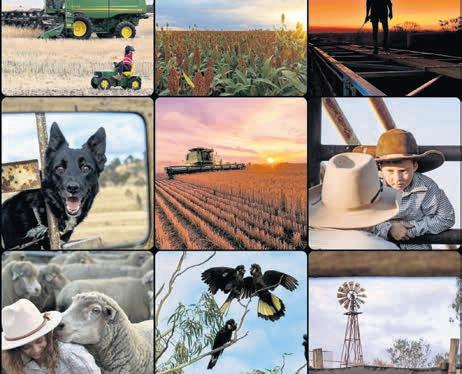
Rural Aid is launching the sixth annual Spirit of the Bush photo competition, inviting people to share images that capture the strength, resilience, and beauty of life on the land.
Open until August 31, the competition provides a powerful platform for rural and regional Australians to tell their stories through the lens – stories of beauty, resilience and community spirit in the face of hardship.
This year’s competition comes after another challenging season of natural disasters, with floods, fires, and droughts again testing rural people.
“Every year, we are humbled by the entries we receive, each photo is a tribute to the unwavering spirit of our farming families and communities,” Rural Aid chief executive John Warlters said.
“The Spirit of the Bush competition is more than a showcase of talent. It’s a reminder of the grit and determination that keeps rural Australia going.”
Entrants are invited to submit a high-resolution, landscape photograph that represents the true Spirit of the Bush. Photos can be submitted via Instagram or Facebook by tagging @ruralaid in the image and using the hashtag #SOTB2025. Entries can also be submitted, and the competition terms and conditions reviewed, via www.ruralaid.org.au/ spirit-of-the-bush/.
A panel of judges will select 10 winning images, each of which will receive a $250 prepaid Visa card. Winners will be announced on September 15.

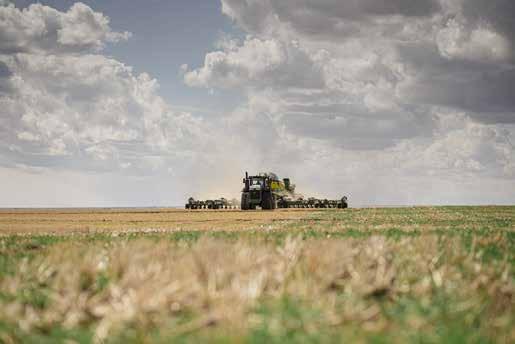



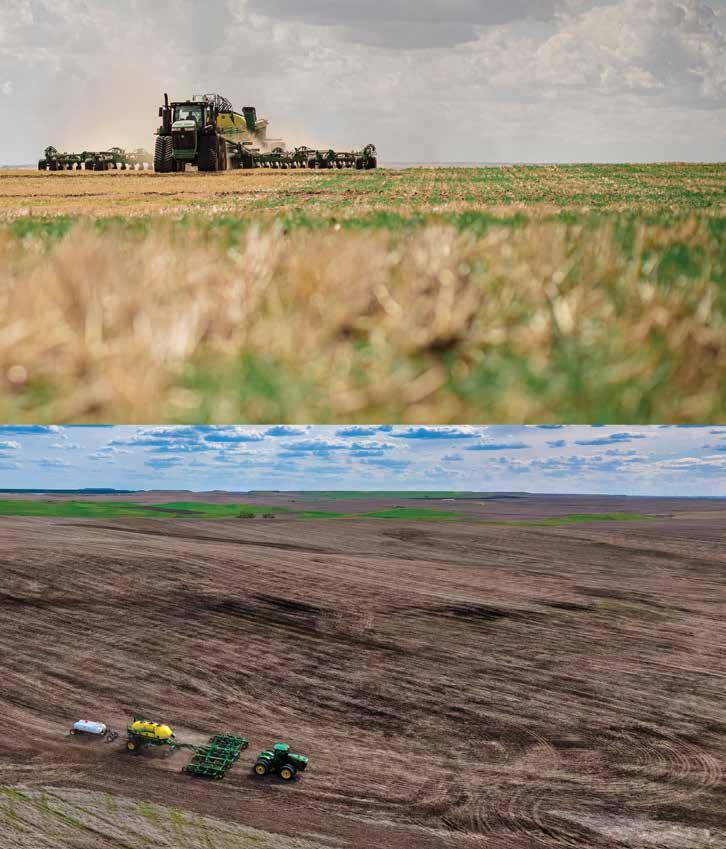




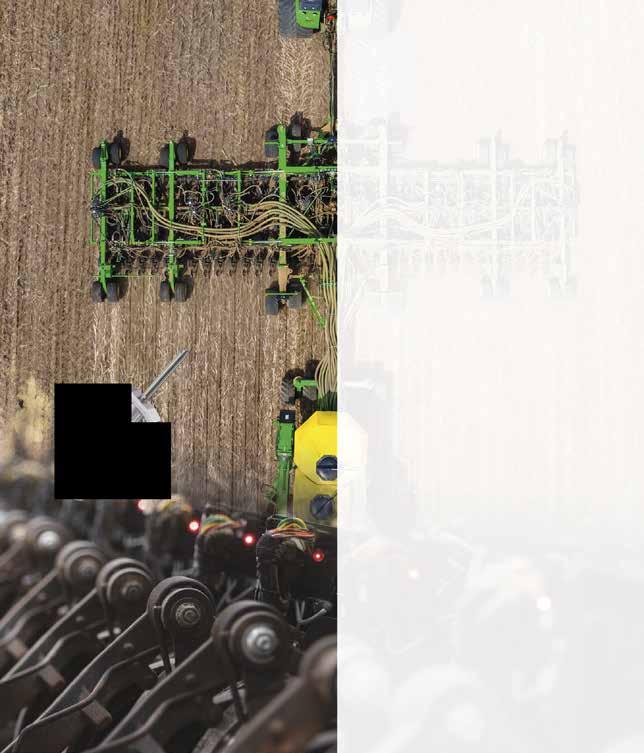




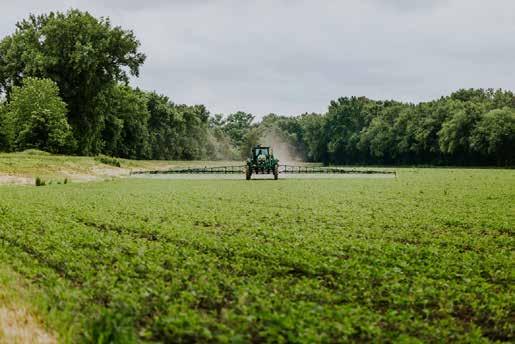






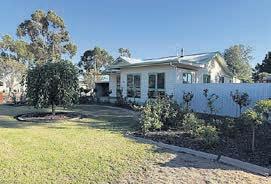

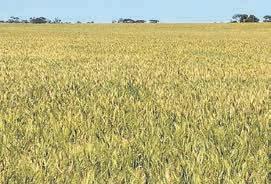
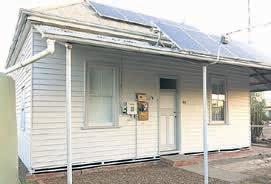





























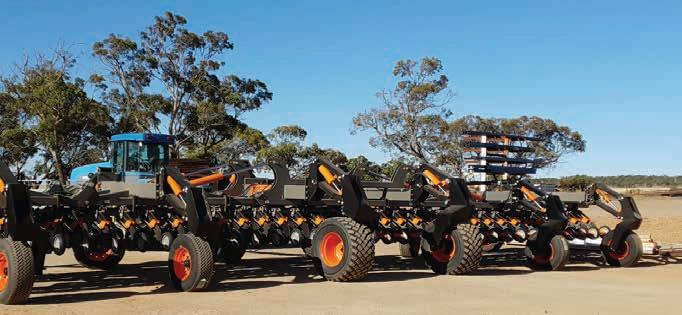

















BIG PICTURE:
Farmer Alan Bennett inspects an exclusion fence on his property north of Yanac on the Big Desert boundary.
Picture: PAUL CARRACHER


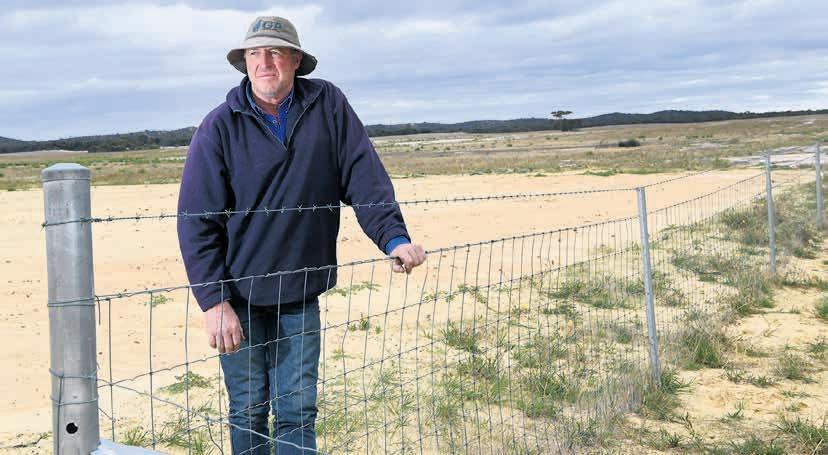
BY COLIN MacGILLIVRAY
Agroup of Wimmera farmers is hoping DNA evidence will shed light on an increasing spate of livestock attacks in the vicinity of the Big Desert Wilderness Park.
The West Wimmera Action Group is calling on the State Government to reinstate an unprotection order for dingoes in north-west Victoria, and hopes to prove dingoes are behind the uptick in livestock attacks since the order was lifted last year.
The unprotection order, before it was lifted, allowed farmers to use lethal control methods on dingoes on private land, and on public land within three kilometers of a private land boundary.
The State Government last year suspended the unprotection order in north-west Victoria in the region surrounding Big Desert, citing concerns the genetically distinct Mallee dingo population could become extinct.
Yanac farmer Alan Bennett said the lifting of the unprotection order had resulted in an uptick in sheep attacks on farms surrounding Big Desert.
“There’s a group of about four landowners adjacent to the Big Desert on the southern edge on the
Nhill-Murrayville Road, and we’ve been highly impacted for the last 14 months since the unprotection order was lifted,” he said.
“The extent of the attacks is actually increasing now. They are moving further into farmland.”
Mr Bennett said the West Wimmera Action Group had recorded evidence of dog prints on a property 19 kilometres from the edge of Big Desert.
“We’ve had a dog attack on a fifth farmer’s property who I’m guessing wouldn’t have previously had dog attacks for decades probably,” he said.
“We’re seeing these dogs roam and range in a bigger area now because they’re becoming established in that fringe area.
“So rather than coming out of the desert and attacking our sheep, they’re sort of living in that fringe area now and roaming further.”
West Wimmera Action Group dingo focus group leader Marty Colbert said he was collecting DNA evidence in an attempt to prove dingoes were behind the attacks.
much work has been done on the DNA of the dingoes in the Big Desert.
“We’re compiling a DNA data bank from the attack sites just to eliminate other factors.
“If the DNA system shows that there’s a tie-in with the Big Desert dingo genotype, that will help answer some of those questions.”
Mr Colbert said he collected DNA samples from fresh attack sites.
“It involves the farmer or farmers having seen the attack, staying on site and ensuring no other species get involved with the carcases so that we can try to eliminate that sort of contamination,” he said.
“Then I’ll arrive and gather the DNA samples in a very sterile manner with rubber gloves and swabs.
“At this stage I’m just collecting and storing the DNA safely.
“You can’t just grab a couple of tubes or a couple of swabs and go like that.
“I need a fair number, so at this stage it’s just important to have the DNA and keep it stored.”
and their proximity to native timber belts or the national park,” he said.
Mr Bennett said if the data showed dingoes were behind the attacks, the group would use it to strengthen their argument that the government reinstate an unprotection order.
He dubbed the current arrangement ‘a lose-lose situation’ for both landowners and dingoes.
“We’ve got the landowners who are hugely impacted and it’s costing them probably $100,000 a year at the moment in direct lost livestock and we’re seeing the dogs move out of the desert and live in an environment they’re not supposed to be in,” he said.
“This unprotection order is not actually helping the dogs or helping us.
“The previous management kept the dogs inside the Big Desert, which is their natural environment.

An online calculator that helps land managers monitor water supplies has been upgraded.
Agriculture Victoria’s farm water calculator now offers a more user-friendly and accessible experience in estimating water requirements across a farm, storage capacity in tanks and dams, and water supply potential from sources such as shed roofs, waterways, groundwater and catchment runoff.
Agriculture Victoria climate change development officer Heather Field said by adjusting rainfall inputs, users could explore how their water supply might perform under different climate scenarios, helping them plan for dry seasons or unexpected shortages.
“The calculator now works seamlessly on mobile phones and tablets, making it easier to perform in-field assessments,” she said.
“It complements the existing summer water calculator, which focuses on livestock water needs and dam longevity during hotter months. For the most accurate results, farmers are encouraged to use the calculator alongside regular monitoring of water use, storage and supply.”
People can try the upgraded tool at go.vic. gov.au/44llzBj. Farmers across the state can access technical information and advice to help manage the impacts of increasingly difficult seasonal conditions via Agriculture Victoria’s website, www.agriculture.vic.gov. au/drought or by calling 136 186.
Premier agrifood innovation event evokeAG will bring the brightest minds in agtech, food production, research and agricultural investment to Melbourne next year.
Led by AgriFutures Australia, evokeAG is a leading global agrifood technology and innovation event that unites the agrifood innovation community around the world.
Entrepreneurs and growing companies will showcase their work, together with live demonstrations, food and beverage experiences and interactive sessions designed to inspire, inform, and drive collaboration.

“At the moment the wider belief is that there is a chance the attacks are caused by either escaped domestic dogs or errant livestock dogs like border collies or kelpies,” he said.

“We’ve been fortunate that so


Mr Colbert said the group was using other methods of data gathering in addition to DNA samples.
“We’re also geotagging the extent of the attacks and their locations –not just where they are in general, but where they lie in the landscape
“The dogs that came out were trapped and euthanised – it was a successful system that managed both sides of the interface between public and private land.
“Now it’s a disaster, and it’s going to be a disaster for the dogs, because the dogs should not be out living in this environment – it’s not where they’re supposed to be.”
AgriFutures Australia chair Cathy McGowan said Victoria was home to a vibrant and diverse agrifood sector, worldclass agricultural research institutions, and some of the most innovative producers and startups in the country.
“It’s the perfect place to showcase what is possible when agriculture and innovation come together,” she said.
The event is at Melbourne Convention Centre on February 17 and 18. Visit www. evokeag.com for more information.



















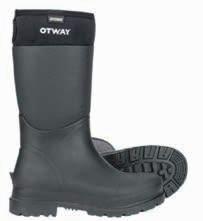

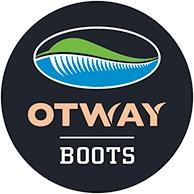





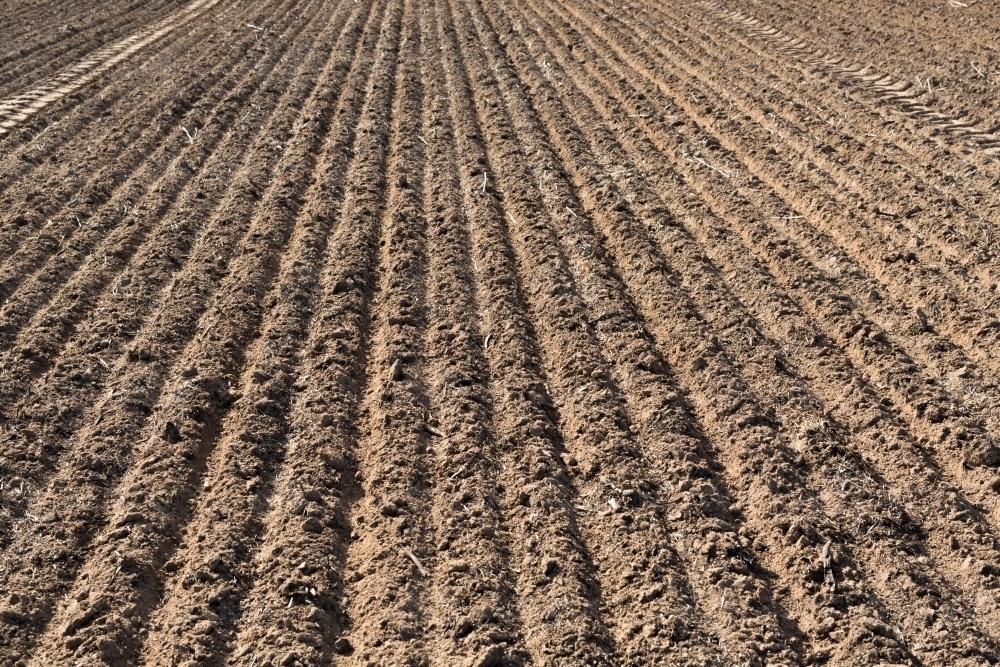
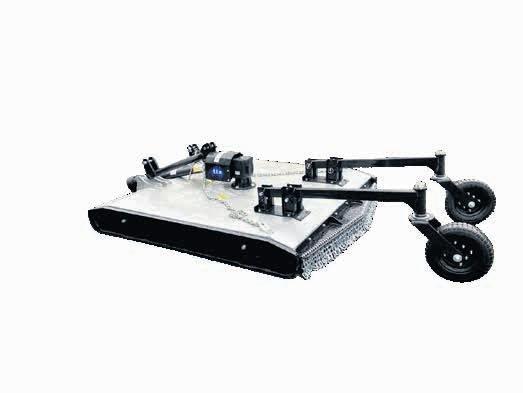
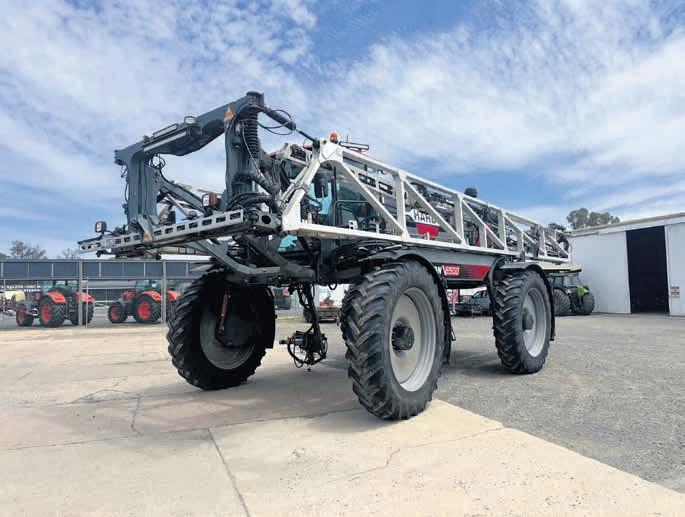
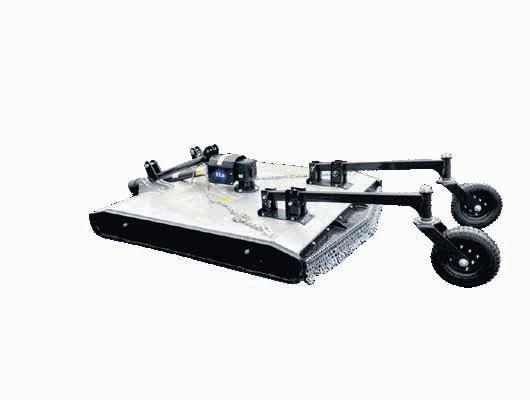
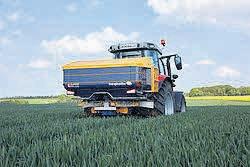








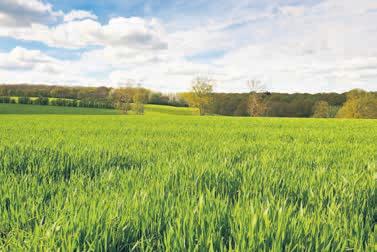

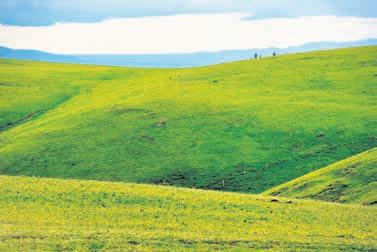

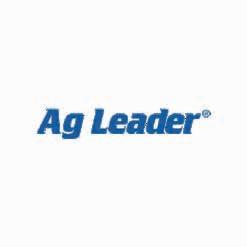







Farmsafe
Australia’s new campaign will focus on fatigue –one of the most under-recognised safety risks in Australian agriculture.
As part of National Farm Safety Week last week, Farmsafe Australia turned the spotlight on fatigue through its ‘Second Chances – Who Knows How Many You’ll Get?’ campaign.
Whether it is jobs that farmers push through at the end of the day, the early mornings after a late night, or the ‘cannot wait’ tasks in the middle of sowing, harvest, shearing or packing, FarmSafe chair Felicity Richards said the message was simple – the ‘just keep going’ culture wasn’t working.
“Fatigue has long been normalised in agriculture,” she said.
“We don’t think twice about the 18-hour day. We shrug off brain fog, forgetfulness, dropping things or zoning out as just part of the job.
“But when you’re tired, your deci-
sion-making suffers. You cut corners. You miss steps. You make mistakes. And in this environment, mistakes can be fatal.”
This year’s Safer Farms Report shows that after recording the lowest on-farm fatality figure in 2023 – 32 deaths – the sector was rocked in 2024 by 72 fatalities, the highest figure in more than two decades.
Severe injuries, meanwhile, have remained consistently high for more than a decade.
Ms Richards said fatigue was a critical factor hiding behind many of the events.
“It doesn’t always show up in the incident report, but ask any farmer and they’ll tell you about the time they nearly rolled a machine, misjudged a gate, forgot a safety step or lost their footing after days of little sleep,” she said.
“Fatigue is the invisible risk that sneaks up on us because we’ve trained ourselves to ignore it.”
The campaign encourages farmers to reframe fatigue as a safety threat, not a personal weakness.
Ms Richards said too often, the industry viewed pushing through exhaustion as a badge of honour.
“But the truth is, real strength is knowing when to pause,” she said.
“Backing yourself to rest, or call in help, or wait for daylight, that’s a safety decision. Not a vulnerability.”
FarmSafe is advocating for a cultural shift needed across agricultural businesses.
The campaign urges practical changes that respect both the work and the worker – whether it’s shifting expectations around workload, improving rostering, or planning for pressure seasons ahead of time.
And Ms Richards said the message resonated across all sectors; cropping, livestock, horticulture and beyond, particularly during high-pressure times.
“When you’re under pressure to get
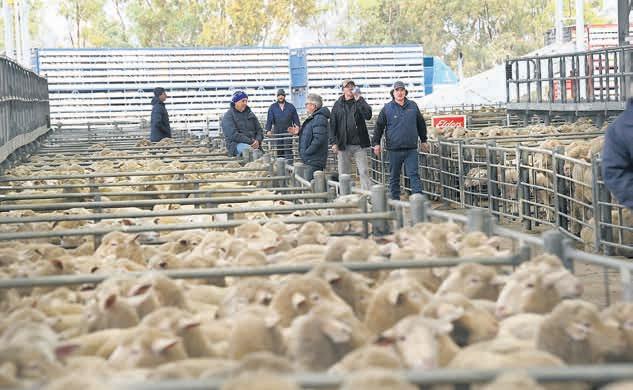
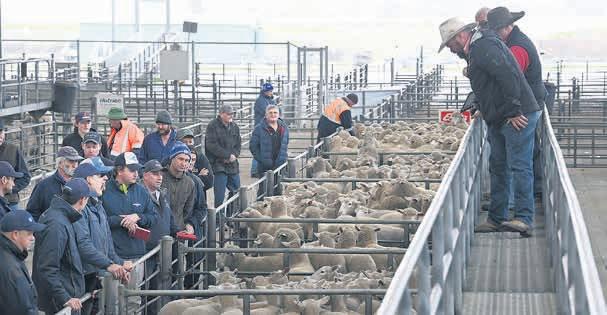
TIME FOR CHANGE: Starting times for the sheep market at Horsham Regional Livestock Exchange have changed. In partnership with Horsham Agents Association, the livestock exchange has changed times for the Horsham market – now starting 90 minutes after the conclusion of the Hamilton sale, but no earlier than 12.30pm. The changes were made to ensure the best possible outcomes for vendors by allowing a full gallery of buyers to attend both the Hamilton and Horsham sales on the same day. The change came into effect on July 16. However, on alternate weeks, the sheep market will begin at the usual time of 9.30am.
the job done, it’s easy to skip the toolbox talk or say yes to one more paddock,” she said.
“But too many families have been devastated by what can happen in those final hours of the day when someone was just too tired to see the risk.”
As part of the campaign, Farmsafe is encouraging teams and families to speak more openly about fatigue and warning signs.
Some of the campaign’s key fatigue reminders include:
• Make time for the plan, not just the job – a short pre-job check can prevent long-term consequences.
• Don’t let deadlines drown out danger – one honest conversation beats one emergency phone call.
• Build in time for safety – schedule backup and build buffer days into pressure periods.
• Call the huddle – a quick check-in can reveal risks someone else might not see.
The campaign also calls for leaders across the agricultural industry to set the tone.
“If you manage staff or contractors, your choices matter,” Ms Richards said.
“You set the example, not just in how you work, but in how you rest.
“The way you talk about risk and decision-making shapes what others feel is okay.”
Farmsafe encourages rural organisations, businesses and industry bodies to use the week as a platform to start the conversation.
“Don’t wait until you’ve had a scare to talk about fatigue,” Ms Richards said.
“Schedule a break, check in with your crew, and create space for people to speak up.
“Because when someone’s tired, really tired, we don’t need to push them harder. We need to listen.”
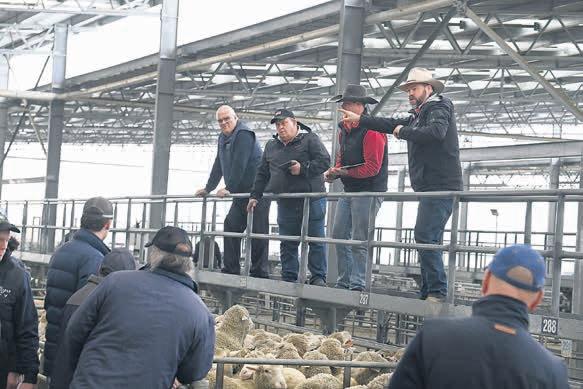
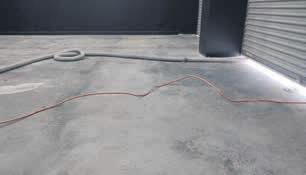








BY BRONWYN HASTINGS
Ashearing competition, Women in Ag lunch, and Australian singer-songwriter
Shannon Noll will feature at Hamilton’s annual Sheepvention Rural Expo, starting Sunday.
A leading event in the Australian sheep industry since 1979, the two-day event brings together agribusiness, machinery, livestock and professional services, with feature events such as a sheep show, farm dog championships, and a wide range of exhibitors from agri-trade to home and garden.
Sheepvention president Darren Schurmann said the event also had some new initiatives.
“A Women in Ag lunch on Sunday is going to be a standout event – it will shine a light on the women who keep our farms, families and communities going strong,” he said.
“It’s also a chance to hear from these inspiring women who work in agriculture, are breaking glass ceilings and leading from the front.
“They’ll be sharing practical and hard-earned knowledge with the attendees.”
Mr Schurmann said there would be a new shearing competition based on both speed and skill.
“The sports shear is an exciting competition where the shearers are
“The whole aim of the concert is to get together, with all profits from the concert being invested back
into the community through mental health training and education in the region”
– Darren Schurmann
judged on their speed as well as their skill. It’s really popular and the start of the sport shear season, so I think it’s going to be supported really well,” he said.
An ‘Ag Passport’ is offered to children to engage them in activities and learning stations across the venue, and go into the draw to win a prize.
Mr Schurmann said the After Dark drought relief concert, headlined by Shannon Noll and supported by Hamilton-local acts Michael Honan and Bec Milly, would raise money for mental health.
“It’s a night just to come together and support each other and shine a light on mental health,” he said.
“The evening will also include a brief panel of speakers sharing lived experiences and offering practical advice and support.
“The whole aim of the concert is to get together, with all profits from the concert being invested back into the community through mental health

training and education in the region.”
Mr Schurmann said Sheepvention was more than just sheep – it was about inventions and industry innovations.
Exhibitors will attend both days – from 8am to 5pm on Sunday and from 8am to 4pm on Monday.
“There are just so many different
areas of Sheepvention, it can be exciting and attractive to anyone,” Mr Schurmann said.
“It’s good to get off the farm and talk and have a look at all these innovations and things we can offer.”
People can find more information and book tickets online at www. hamiltonshowgrounds.com.au.
The Environmental Protection Authority has made available a free document with advice for property owners whose farm fronts a creek, stream or body of water.
The document ‘Reducing the impacts of grazing on water quality’ is a collection of what works best in preventing erosion, sediment and loss of vegetation.
“This is about making choices on managing stock, land and vegetation that become lasting, passive protections for the waterway,” director of operations for regional Victoria Jessica Bandiera said.
“It explains the risks to waterways from grazing and offers practical measures to prevent them without hampering normal operations of the farm.”
The risks to riparian land can include overgrazing, especially during winter or drought; feeding stock too close to waterways; allowing animals with calves or lambs onto riparian land; allowing stock to directly access waterways; and allowing runoff with sediment, nutrients and contaminants to flow into waterways.
Practical tips include fencing; installing off-stream watering; revegetation to stabilise banks and fight erosion; carefully managing grazing rates; and keeping stock feed, fertiliser and manure away from waterways.
The guide also explains the signs to watch out for, so people can protect the waterway, native plants and wildlife, and their land, before the problem becomes critical. It was produced to support farmers and build their understanding of how to comply with environment protection legislation, and minimise environmental risks.
‘Reducing the impacts of grazing on water quality’ is available from www.epa.vic.gov.au.

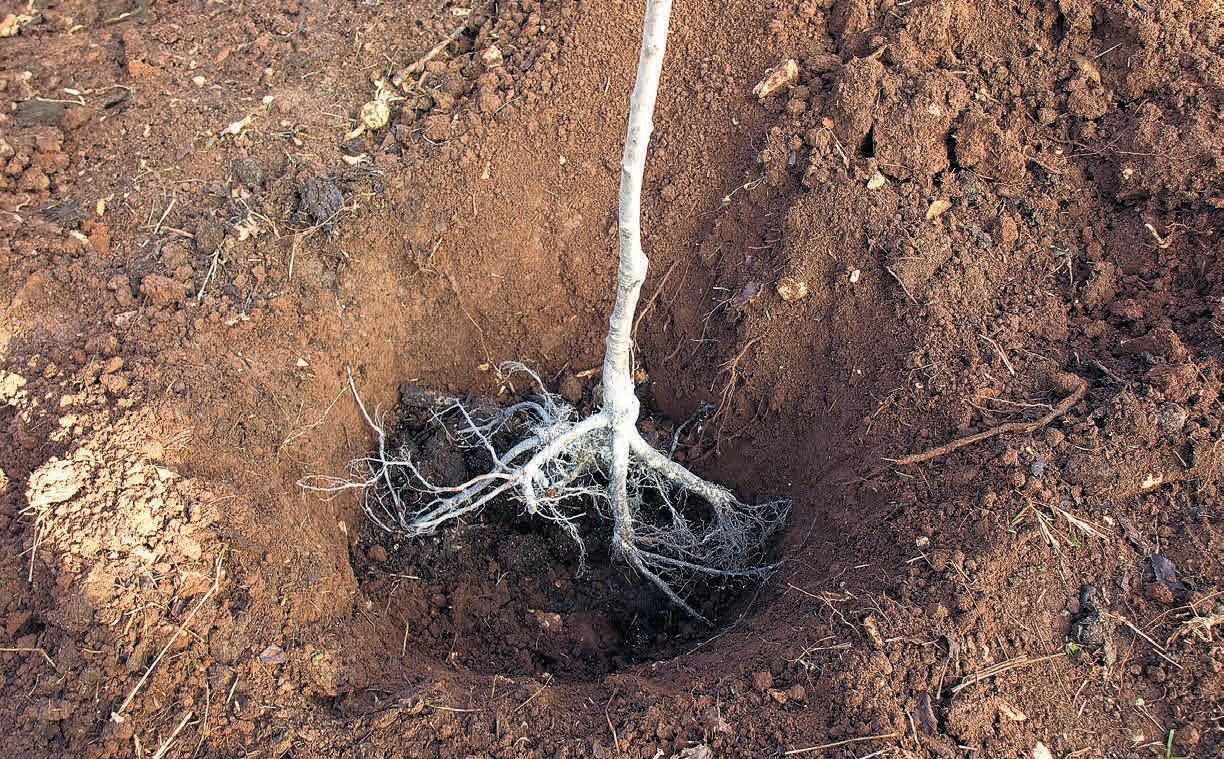





Edenhope merino sheep stud
Curlew Merinos has bred a line of rams with footrot resistance, following successful breeding for both worm resistance and to cease mulesing.
Stud co-owner Elise Kealy, whose father was a pioneer of worm-resistance breeding two decades ago, said the eradication project had value in a very active market.
“We think there is an opportunity for somebody to breed sheep that have footrot resistance in Australia – people are now buying, selling and trading sheep more than ever,” she said.
“Anyone who has neighbours that buy and sell sheep, or who has to walk sheep up and down a public road, is at risk of catching footrot at some point.
“Prevention is better than cure, so they say, so the footrot resistance breeding value is a step in that direction.”
Ms Kealy said footrot costs the Australian sheep industry $80-million a year.
“About $60-million of that is in loss of production, so it’s not actually in treating sheep with footrot, it’s the lower growth rates, less wool production, less lactation and reproduction,” she said.
“The New Zealanders have got a huge head start over the Australians
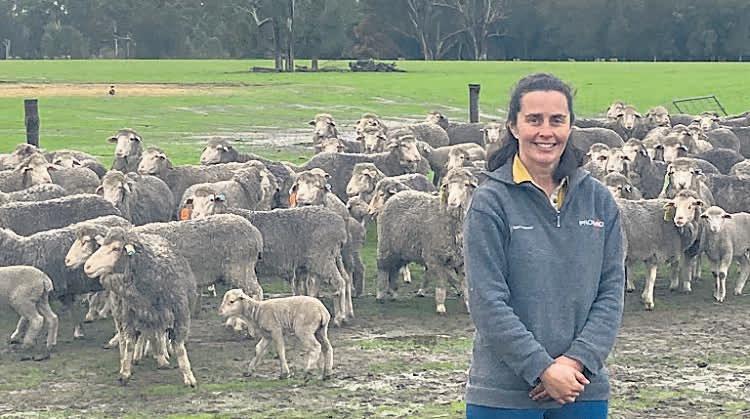
– in Australia, having footrot is a notifiable disease, but in New Zealand just about everybody has it, which has allowed them to be able to score the sheep.
“That data is submitted to sheep genetics, just like a fleece weight or a growth rate or fat muscle or worm resistance, and sheep genetics give you back a breeding value.”
Ms Kealy said Australian producers were unable to import semen or
rams with footrot resistance from New Zealand, owing to Australia’s biosecurity program.
“However, Australian genetics can go to New Zealand,” she said.
“There’s an Australian ram in New Zealand who is now seven years old, who had semen collected before he went, and we were able to get some of that semen a couple of years ago.
“He’s now sitting in the top 10 per cent of the whole merino select analy-
sis for footrot, after having four drops of progeny measured for footrot, and so we’ve been able to use him to give us a leap forward.”
Ms Kealy said in the meantime, they had sent five different drops of cull rams to a host farm to be infected with footrot to collect raw data to help select for resistance.
“We currently don’t have footrot on our farm, so we have been sending a portion of our cull rams to a host farm

Did you know we also do windscreens for tractors, trucks,
Contact Horsham Autoglass today to organise prompt repair or replacement.
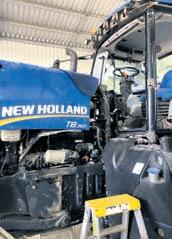


OʼBrien & Smith Lawyers are pleased to announce they have acquired Derbyshire Legal, a respected institution in Stawell.
As Yvonne Derbyshire steps into a well-earned retirement, O’Brien & Smith Lawyers are excited to continue Derbyshire Legal’s tradition of exceptional legal service. O’Brien & Smith Lawyers extend their heartfelt congratulations and best wishes to Yvonne on her retirement and thank her for her continued trust and support. The team O’Brien & Smith Lawyers will be available to assist you with your legal needs from the same familiar location at 178 Main Street, Stawell from 1 March 2025.
The team at OʼBrien and Smith Lawyers look forward to assisting with your legal needs, and are happy to announce that Helen Thomson is back from maternity leave and now accepting appointments.
Please note that consultations will be conducted by appointment only to ensure the highest level of service. To arrange your appointment, kindly contact O’Brien Smith Lawyers’ reception by calling 5381 2222 or visit www.obsl.com.au.
“There has been quite a bit of interest in the footrot resistance, but we won’t really know until ram-selling or semen-selling time how much interest there is”
– Elise Kealy
to be infected with footrot each year so that we can select ones who are resistant to it,” she said.
“We cull the ram who has performed the worst, and we reuse the ram who has performed the best, plus one of his sons,” she said.
“It’s quite a slow way to do it because by the time you’re measuring that footrot resistance on the 18-month-old rams, you’ve already got another drop of lambs on the ground.”
Ms Kealy said following the success of worm-resistance breeding, wrinkle and dag was added in to cease mulesing, and they were now also looking to breed for flystrike resistance on top of footrot resistance.
“There has been quite a bit of interest in the footrot resistance, but we won’t really know until ram-selling or semen-selling time how much interest there is,” she said.
“But it has certainly sparked a lot of conversation and a lot of discussion.”
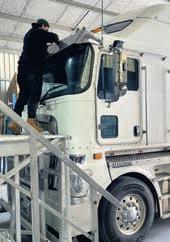






Just when you thought it could not get worse for the Federal Coalition, Barnaby Joyce breaks free of his leash and attacks their Net
Zero Emissions by 2050 policy.
It looks like a few others from the Coalition are joining the pack, but could they end up just being scavengers on the Coalition carcass?
Granted, Australia’s grass-fed beef cattle industry organisation, Cattle Australia, has said net zero by 2030 is not achievable.
That is only five years away, so they might have a point.
We can wait to see which other sector puts their hand up and say ‘no can do’.
But the Coalition policy is for net zero by 2050.
I’ll be 90 years old by then and hoping like hell someone has managed to do something to stop the pernicious spread of climate change.
If they haven’t it will be farmers who pay the highest price.
More droughts, more floods, more algal blooms … one unholy mess with humans to blame.

with Libby Price

Why do I think it is more about power than it is policy?
Because the private members bill is doomed before it is even presented to the parliament.
Labor has 94 MPs, the Coalition 43.
You don’t have to be a mathematician to work out that other than a mutiny in the Labor party, it is going to be whimper not a bang.
To quote ANU political analyst Jill Sheppard’s analysis of last week’s return to Federal Parliament after the winter recess: ‘Restless politicians reliably create havoc for their leaders’.
So what is Barnaby’s plan?
He’s going to submit a private members bill to the Parliament to repeal the very legislation he was instrumental in signing off for the Nationals in 2021, in exchange for an extra seat in the Morrison cabinet.
Now he has signed up another former Nationals leader, Member for Riverina Michael McCormack.
The one thing they have in common is wishing David Littleproud was not leading the party.
What frustrates me the most about the Coalition tussles over this is that it is not really about climate change. It is about power struggles. Barnaby Joyce realises he has zero chance –about like zero emissions – of ever being Nationals leader again.

It also goes partly to explain why David Littleproud foolishly walked away from the Coalition agreement in the first few weeks after the last federal election.
The wolves from within his own party were sniffing and growling at the door.
If there is a change in the Nationals leadership, it won’t bode well for Liberal leader Sussan Ley.
She is probably the leader-inwaiting with yet her own fellow Liberals biding their time to strike at the leadership when the iron is hot.
Barnaby Joyce cares little about that having publicly stated ‘We’re not gelded, we’re not emasculated. We’re very much virile and out there’.
I’ll leave that image with you.
Insurance is o en misunderstood, and many myths surround the topic. Let’s take a light-hearted approach to debunking a few of these common misconceptions.
One of the biggest myths is that you don’t need insurance until something happens. is thinking is like saying, “I’ll buy an umbrella when it starts raining.” e reality is that insurance is there to protect you before disaster strikes, not a er. It’s better to be prepared than scrambling when things go wrong.
Another myth is that insurance companies won’t pay out when you need them. While stories of bad experiences might fuel this belief, the truth is insurance companies exist to pay claims, they just need to verify that the claim is legitimate.

Being transparent and understanding your policy details ensures the process goes smoothly when you need it most.
Many also believe their neighbour’s insurance is just like theirs. While you may live in similar homes, your needs could be di erent. Your neighbour might not have kids or pets, or perhaps you have a home o ce. Insurance is personalised, and it’s essential to review your policy regularly with a broker to ensure it suits your speci c circumstances.
Finally, there’s the myth that the cheapest insurance is always the best deal. While everyone loves a bargain, the lowest price doesn’t always o er the coverage you need.
ink of insurance like buying a pair of shoes: they need to t your needs.
“A broker can help you balance cost and coverage for the right fit.
By debunking these myths, you can better understand your insurance and ensureyou’re adequately covered when life’s surprises come your way.”
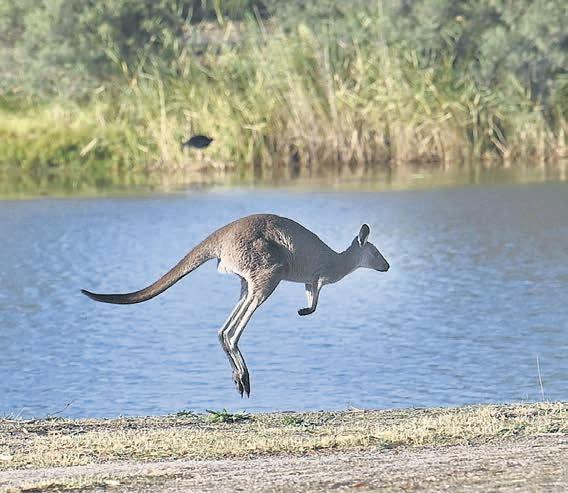
Farmers who have livestock competing with kangaroos for fodder can apply for rebates to engage professional harvesters to manage kangaroos under an approved authority to control wildlife.
The Victorian government is providing $1.8-million to help drought-affected farmers control eastern and western grey kangaroos, until the end of this financial year or when funds are exhausted.

People who own, share or lease a primary production business and meet other requirements can obtain refunds for professional harvester fees and on-farm disposal expenses. An authority to control wildlife can be obtained online at www.vic.gov.au/wildlifemanagement-and-control-authorisations and people can email kangaroorebate@ agriculture.vic.gov.au for more information and help on the program.





Wonwondah will play host to a two-day workshop next month as part of a series of adaptive-farming courses across regional Victoria.
Consultant Kate Burke will present the ‘In good times and bad: adaptive skills for your farming future’ workshop, funded through Agriculture Victoria’s Farm Business Resilience Program.
Dr Burke said the workshop, at Won wondah Hall from 9am to 3pm on Au gust 18 and 19, would teach farmers a range of valuable skills around manag ing risk, identifying opportunities and planning for the future.
“At the end, basically they’ll be able to identify some areas for improvement and give themselves a pat on the back

“At the end of the day the one thing that’s certain is that everything is really uncertain, so we need these skills to be able to capture the opportunities when they present, and also to have things in place so we can batten down the hatches in more uncertain and tougher times”
plan for all the aspects of the business,” she said.
“The feedback we’ve got is that people really enjoy the two days with their peers, and they’ve gone away really motivated.
“When we check back on them six months later they’ve actually done some really significant things, whether that’s getting cracking with succession planning, rolling out an infrastructure project or just resetting a few relation-

Worms and scours can be a significant problem in weaners and lambing ewes with limited feed and the stress of winter.
Sheep that are nutritionally stressed and in grazing-short pastures are likely to be most affected this winter.
Worms should be considered in all ill-thrifty or scouring sheep, regardless of when the sheep were last drenched.






To establish whether worms are the cause of ill-thrift or scouring, it is worth considering the nutrition of the sheep and the sheep’s class and condition.
It is also worth considering the drench program of your sheep; products used, dates drenched and time since last drench.
To know for sure, faecal samples from at least five affected and five
Many measures can be taken to help manage worms in sheep throughout winter, including test every four to six weeks and in lambing ewes four weeks before
For further information people can visit their local veterinarian or Agriculture Victoria animal health






